#“was a killing that was intended to evoke terror” most if not all murders evoke terror….. but like correct if I’m wrong ofc
Explore tagged Tumblr posts
Note
(1/?) The MCU is going on a specific direction and might touch Wanda's history of mental illness. Maybe talk about that when you have the time? Wanda was going on a nice direction before all that happened.
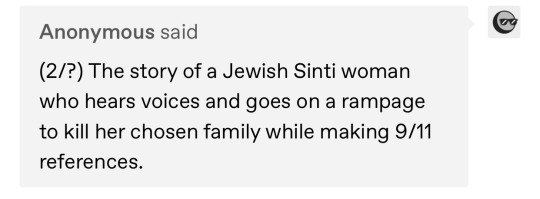
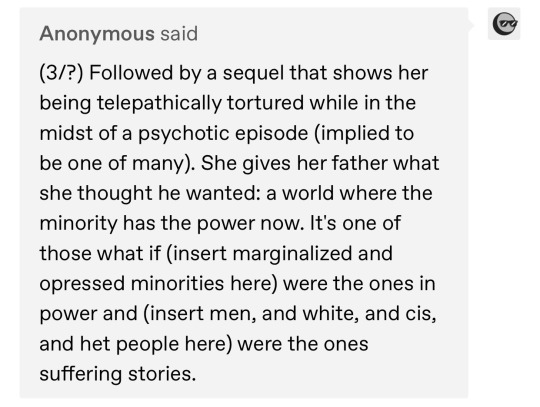
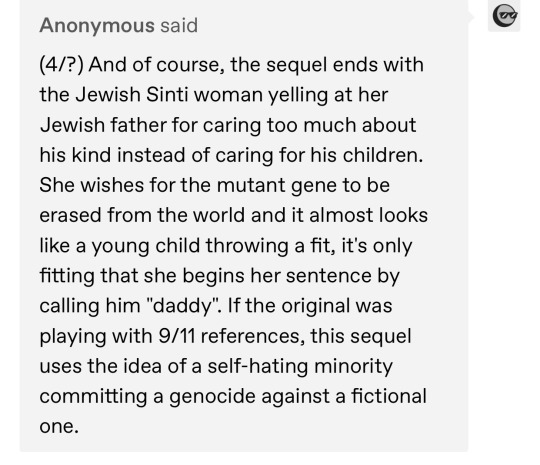
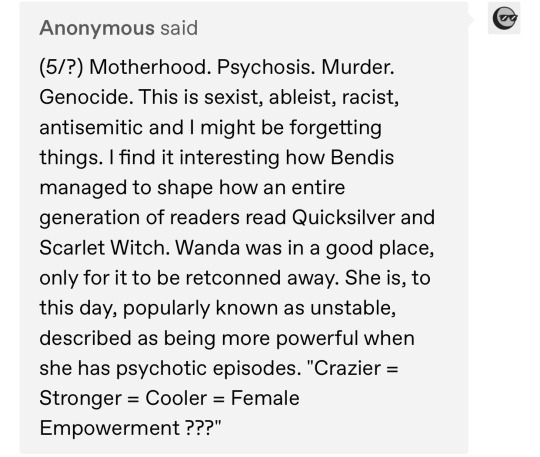

Whew! Sorry it’s taken me so long to answer this— I have several super-long message chains like this one in my inbox and they’re hard to parse through and harder still to write a real answer for. I’m gonna try through a couple of these today.
Well, I think you hit all the important points here-- the optics of a mixed-raced family of first- and second- gen Holocaust survivors committing mass acts of terrorism, becoming rulers of a fascist, supremacist regime, and then, finally, committing pseudo-genocide, are, you know, not great. These are complicated characters whose representation can easily swing in either really positive or really, really negative directions, but this goes beyond the pale for me, especially given the proximity to 9/11.
The portrayal of Wanda's mental illness during this time, while not wholly unsympathetic, is wildly inaccurate and generally played as a horror motif. I'm not an expert on schizophrenia, but I think we can all agree that it's high time we moved past exploiting sick and disabled people's experiences for cheap scares. It's especially frustrating because Wanda, as a character, does have ground for poignant stories about mental illness-- she's had numerous traumatic experiences, starting with generational trauma and a lifetime of violent discrimination, and ending, at that point, with the deaths of her young children and the abrupt dissolution of her marriage. Her mental health should be addressed, but not in a way that demonizes illness or characterizes sick people as villains. One thing I appreciate about Robinson's Scarlet Witch is that it represents her mental illness in a very human, matter of fact manner and gives her the power to take control of her own wellness. She has realistic symptoms and pursues realistic treatments, instead of, you know, making hallucination constructs and getting mind-probed by Charles fucking Xavier.
Wanda is simultaneously infantilized and vilified in these stories-- she's denied agency at every turn, and yet, Wolverine and the other "heroes" of this saga view her with unbridled contempt, and most of them are immediately ready to murder her in the name of justice, even before the "no more mutants" spell was cast. You wondered how Bendis was able to inspire such a long lasting hatred of Wanda, and I think the simple answer is that almost every character in House of M hates Wanda. The characters you root for, the characters whose perspectives dictate the tone of the story, direct palpable fury towards her, and even those who aren't out for her blood don't extend any actual empathy towards her-- most are ambivalent to her wellbeing, while Xavier and Strange are incredibly paternalistic.
The final spell, "no more mutants", has baffled me for years. You're spot-on in saying that Wanda here represents a self-hating minority, but it's really hard for me to understand how she could have reached that point. It's not consistent with her previous characterization, nor is it thematically connected to the factors which led to her breakdown. Bendis places the onus of her condition on Erik, alleging that he abandoned and abused his children in his fanatic commitment to the mutant cause, which, besides being a willful misinterpretation of canon, has nothing to do with Wanda's current circumstance-- she's like this because Agatha Harkness altered her memories, because the Avengers continuously gaslit her, and becaue Mephisto killed her kids in the first place. It has nothing to do with Magneto, and Wanda's breakdown has nothing to do with mutant politics. She and Pietro were raised in a loving family until their adoptive parents were killed by racists. Erik didn't knowingly abandon them, and while he did mistreat them during the Brotherhood days, it wasn't parental abuse because he wasn't a father figure to them-- neither party had any idea they were related. Bendis is evoking specific forms of trauma that never actually happened, while ignoring the ones that did, and the effects of the spell itself are vague and seemingly random.
~~~~~
Young Avengers does call back to Wanda's circumstances in Disassembled and HoM, but it doesn't execute the concept of reality-warping in the same way. The driving force in YA is the spell which Billy casts, and Loki tampers with, in the first issue. It is a spell which distorts reality, but it has specific parameters, and neither party is characterized as "crazy" the way Wanda was. The spell was intended to bend space and time so that Billy could pull Teddy's mom from the past, before she was killed, into the present-- it's not dissimilar from how Wanda "retroactively reincarnated" her kids. Due to Loki's interference, however, the spell was hijacked by an interdimensional parasite called Mother. The Mother virus appears primarily as a construct of Teddy's mom, but as her influence over the Earth-616 dimension grows, she's able to create constructs of other dead parents, and even mind-control living adults. All of the ways in which reality is being warped hinge on the specific conditions under which Mother was summoned, and while it is Billy's magic that's fueling these constructs and distortions, they aren't symptoms of psychosis-- Billy doesn't lose control of his magic because he's losing his mind, he loses control because he's too young and inexperienced to protect himself from predatory forces. Those forces do take advantage of his depression and anxiety, but his condition is never the cause.
Loki's magic is wrapped up in the spell, too, but rather than conjuring dead parents, it emerges as a construct of their former best friend, Leah. Loki, in Young Avengers, is a mashup of two personae-- the reincarnated child Loki, and Ikol, a phantom of their past life who is carrying out the previous Loki's evil will even though their heart isn't in it. Ikol has mostly overshadowed Loki, who has been reduced to a ghost that torments Ikol by acting as a constant reminder of their guilt. Ikol is haunted by their past, but it's important that this haunting is a nuanced metaphor and not literal hallucination, as Wanda's condition was in HoM. Because Loki's power is part of the spell, Kid Loki's ghost is able to hijack the reality distortions to summon the construct of Leah, who, in turn, is able to summon the Young Avengers' other exes, the same way that Mother, in the form of Teddy's dead mom, can summon other dead parents.
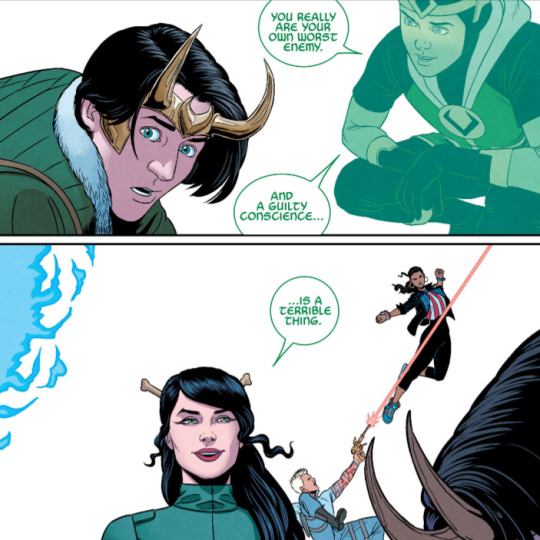
Loki does raise the question of whether or not Billy might be subconsciously influencing Teddy with his powers, but this is clearly illustrated as a manipulation tactic and disproven several times. Loki's original goal in summoning Mother was to draw out Billy's full magical potential so that they could steal his power for themselves. Driving a wedge between Billy and Teddy, and causing Billy to question his own sanity, were devices to make Billy more susceptible to having his power stolen, and they worked-- Billy is not able to divest his magic from the spell and banish Mother from Earth-616 until he overcomes his self-doubt and start exercising mindfulness. Loki, in turn, is not able to divest their power from the spell and banish Leah and the other exes until they own up to their guilt and admit everything they've done. Both characters are experiencing symptoms of exacerbated mental illness-- Billy's depression and suicidal ideation, Loki's disassociation-- but their mental illness is not the source of their magic, but a challenge which makes it harder for them to live as their fully realized selves... just as it would be for any normal person.
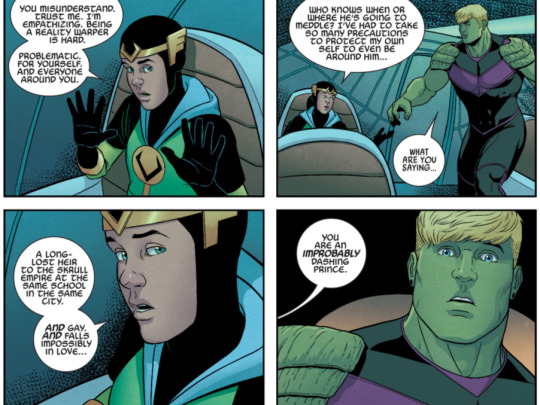
I know that was a long-winded explanation, but I wanted to illustrate what sets Gillen's take on "reality warping" apart from Bendis's. It's based on clearly though-out ideas of how magic works and what defines "reality" in a world populated by parallel universes and living myth-forms. Gillen affords Loki and Billy a degree of sympathy without denying them agency, and Loki is held accountable for their decisions without being painted as a total monster. Bendis, meanwhile, characterizes Wanda's magic as delusion made real, and completely vilifies her for her illness in spite of the fact that she's given no control over her actions.
77 notes
·
View notes
Note
For definitely no reason whatsoever, in response to nothing specific, can you rank the DC Multiverse Earths and tell us a bit about why each is in its place on the list?
Were this in response to an article, I could assure that I generally enjoy the writer’s output perfectly well from what I’ve seen and was absolutely baffled by the bizarrely selective research that went into it. Anyway, I hope you feel guilty enabling the amount of work I put into this truly ridiculous task by the end.

Cliff notes for the relatively uninitiated: that gorgeous monstrosity up above is The Map Of The Multiverse from the miniseries Multiversity, presented as a series of concentric circles bordered by the ‘Overvoid’ that all of reality is suspended in (and framed in such a way as to make clear it is the white of the pages comics are printed on). You go inwards from the borders of creation - moving moreso with each sphere from abstraction to the realm of the physical - to the Monitor Sphere in which once lived the near-omnipotent, now nearly extinct Monitor race that observed and maintained the multiverse, into the Sphere of Gods where the various beings of myth and divinity dwell, and into the innermost sphere where ‘we’ live. The 52 Earths you see within aren’t the whole of the multiverse but the ‘local’ 52 worlds, with infinite other Earths dwelling in their own dimensional pockets; all these universes actually exist in the same three-dimensional space at the same time but suspended in a higher-dimensional substance called ‘the Bleed’, and vibrating at distinct frequencies. Also there’s a ‘Dark Multiverse’ that’s cosmologically speaking ‘beneath’ the map, disintegrating half-formed potential realities that new proper universes are culled from. There’s a lot more to it than even all of that, but that’s enough to explain what’s up with these.
My ranking here is obviously subjective, but mostly comes down to a mix of ‘how cool is this Earth’, ‘how much would this Earth be worth using again’, ‘how well does it work in the context of being part of a shared multiverse’, and ‘do I seriously see creators unearthing any of this Earth’s potential down the road’. Also, Earths 24, 27, 28, 46, and 49 aren’t here, as they’re among the 7 Unknown Earths on the map that were left behind for future creators to define; 14 and apparently 25 have since been revealed.
64. Earth 14

A worthy bottom-place entry, Earth 14 is at the top of the Multiverse Map, and is shown as physically different from the other Earths, seemingly vibrating as if in two places at once; map co-designer and illustrator Rian Hughes suggested in an interview the intent was that this was where new universes entered the multiverse. Instead, ending up the first Unknown Earth to be revealed after the doors were opened to other creative teams, it was shown as a generic dystopian world home to a ‘Justice League of Assassins’ that were quickly dispatched by a generic cosmic threat. A monumental tribute to contextual ignorance and creative laziness.
63. Flashpoint
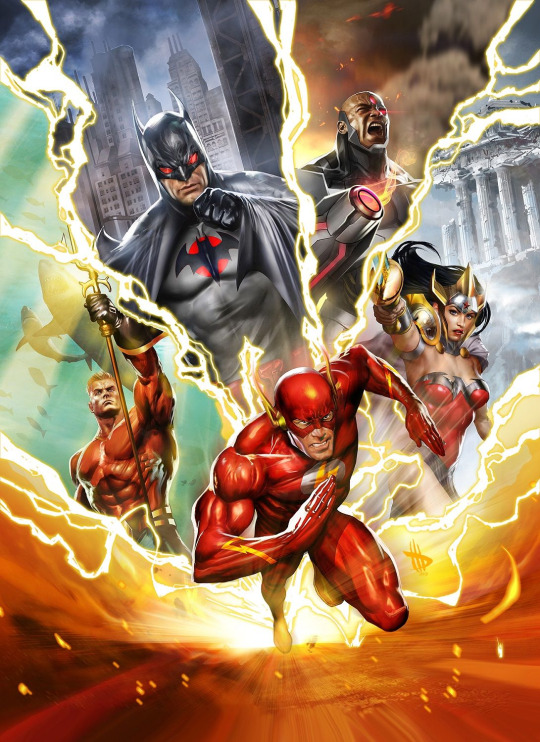
This is one of several Earths I’ll touch on that exist in neither the ‘local’ nor Dark Multiverse, but has directly crossed over or been framed in reference to the currently operating version of the DC Universe and so is probably worth a mention even if I’m not going over every Elseworlds and Imaginary Story DC has ever published. Another dystopian world, in this one an attempt by The Flash at fixing a change to history resulted in an Earth torn apart by war between Aquaman and Wonder Woman, where Cyborg was America’s greatest hero and Kal-El was held captive his entire life in a military bunker rather than becoming Superman. Aside from the prospect of a Thomas Wayne who became Batman when Bruce was gunned down as a child rather than vice-versa - resulting in him being pulled into a recent Batman run after this worlds’ destruction, the reason for this Earth’s inclusion - absolutely nothing of value came of this or the stories tied into it, such that astonishingly in spite of being the impetus for one of the biggest DC reboots of all time with theoretically an entire revised history to play with, essentially no one cares about this anymore.
62. Earth 1

The site of DC’s standalone, bookstore-market oriented ‘Earth One’ graphic novels. The incredible tunnel vision of marketing these for that purpose with titles that exist in reference to their multiversal structure aside, the Green Lantern book is the only one of those I’ve heard about being even kind of good; the rest top out at an interesting failure in Wonder Woman, with a standard forgettable failure in Teen Titans and truly flabbergasting misfires in Superman and Batman. Even Multiverse Map co-designer and writer Grant Morrison described this Earth in a blurb as having a history ‘in flux’, implicitly permitting the reader to believe it’s something else if they really want to, but as it stands in spite of the theoretical wide-open possibilities the foundations have already been built on salted Earth.
61. Watchmen

Home to the cast of characters of Alan Moore and Dave Gibbons’ seminal miniseries. Crossed over with the DC Universe 30+ year later in Doomsday Clock, which clearly intended to set up this world as one ripe for future stories and development rather than a singular text, but instead misinterpreted, stripmined, and otherwise nuked essentially everything that might have had one interested in exploring it further in the first place (in spite of the source text’s very definitive conclusions to all major narrative threads and characters). The only reason this is not ranked even lower is the possibility that the upcoming, as-yet untitled Watchmen project by Tom King and Jorge Fornes might manage to dredge something out of this.
60. Earth Negative 11

The first of the Dark Multiverse Earths here, a gender-flipped Earth where Bryce Wayne generically altered herself into an Atlantean in order to do battle with Aquawoman and the forces of Atlantis. As the Dark Multiverse worlds we have seen thus far are described as being borne of Bruce Wayne’s fears, it’s odd that as opposed to the ‘want of a nail’ scenarios shown on all others, this includes the additional twist of making Bruce a woman, yet does nothing with that. Anyway, this is a very clear product of the Dark Multiverse’s debut in Dark Nights: Metal wanting an evil Batman to correspond to each member of the Justice League, and it’s the oddest, most perfunctory of the lot.
59. Earth 34
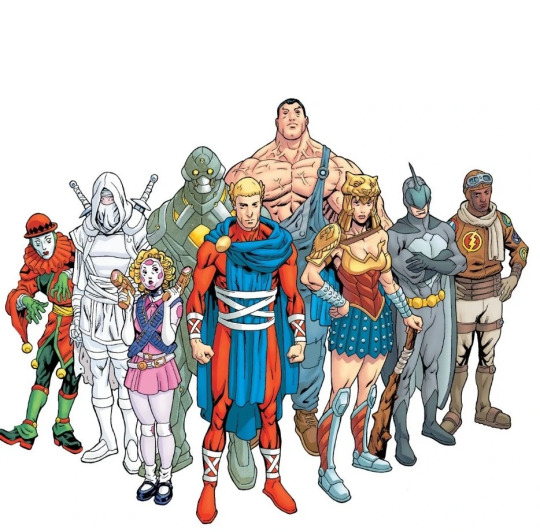
Home to the heroes of the Light Brigade, defenders of Cosmoville, this is an Earth meant to evoke the classic creator-owned superhero comic Astro City. However, as Astro City is itself made up of archetypal signifiers yet isn’t meta about its usage of them, being defined by its storytelling principles rather than the shared universe it builds up in the background, there are essentially no stories to be told here that couldn’t be told with the regular heroes of the DC universe. Which is a shame, those are some neat character designs.
58. Earth Negative 12
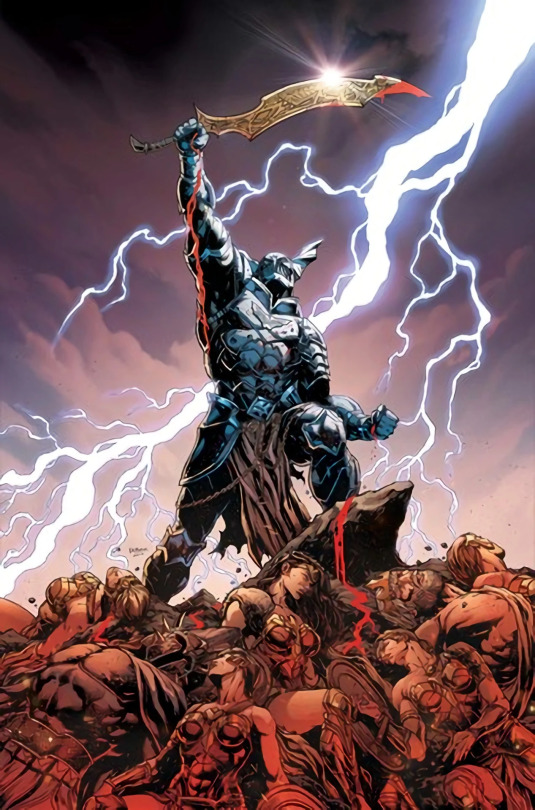
A Dark Multiverse Earth where believing Wonder Woman killed in a battle with the war god Ares, Batman took up the deity’s helm in hopes of redefining war, instead being corrupted by it and becoming an unstoppable monster. There’s basically nothing here.
57. Earth Negative 44

A Dark Multiverse Earth where a computer program meant to replicate Alfred after the butler’s untimely death, attempting to protect its charge, takes control of Batman by way of mechanizing him and turns Gotham into a digital nightmare. A little more on-point than the previous entry, but still not much here.
56. Earth Negative 22
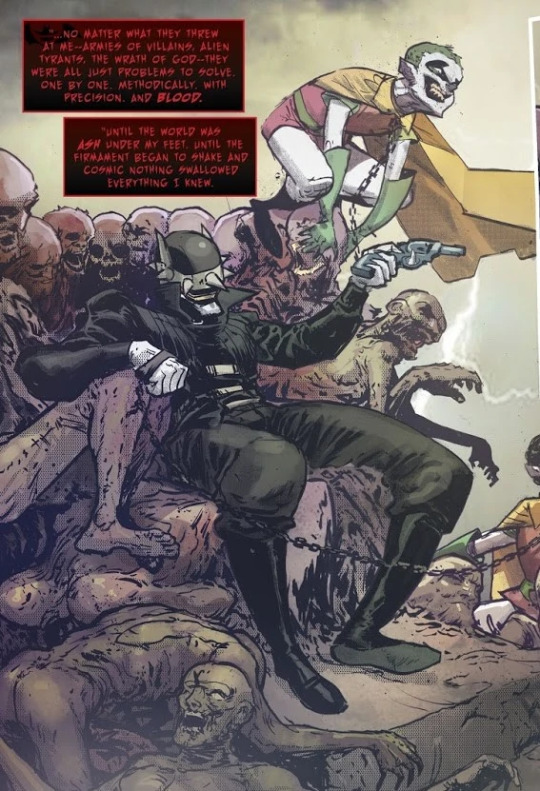
A Dark Multiverse Earth where Batman is finally pushed into killing the Joker, but the Clown Prince of Crime secretes a particularly potent Joker Toxin upon his death that corrupts the Caped Crusader into a second Joker known as The Batman Who Laughs, who slaughters his way across his universe before ultimately making his way to the ‘main’ DCU. The prospect of a Batman/Joker combination is interesting, but an origin for the ultimate corrupted Batman ‘he got drugged into going bad’ falls short.
55. Earth Negative 32
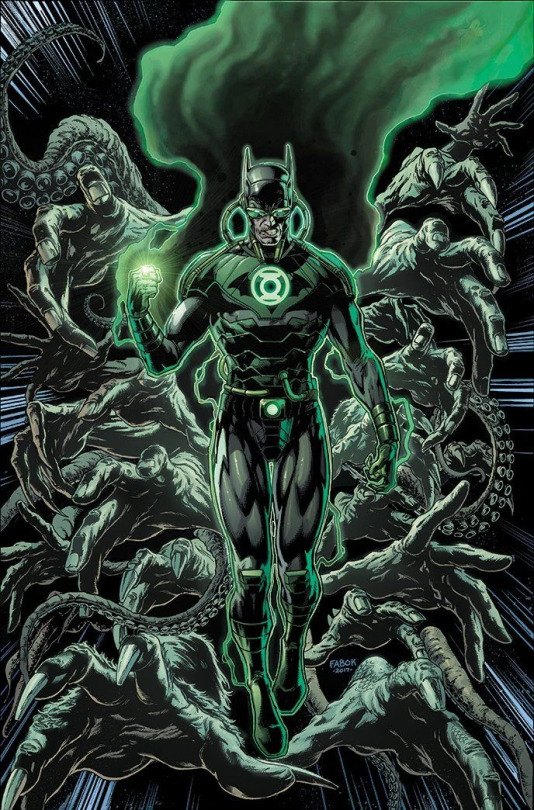
A Dark Multiverse Earth where Bruce Wayne moments after his parents’ deaths was judged worthy of a Green Lantern ring, but having only his hatred of crime rather than the discipline and morality he would come to develop becomes the murderous terror of the underworld, with even the Corps unable to stop him when he manages to force the darkness of his heart through the ring into ‘dark constructs’. Another ultimately throwaway Earth, this at least illustrates the properties of the Dark Multiverse in an interesting way: the constructs he creates aren’t something that’s ever been indicated as being possible or even sensible with the ‘real’ Green Lantern, but as this is a world literally made of nightmares that’s irrelevant.
54. Earth 39

Home to the United Nations superspies the Agents of W.O.N.D.E.R., who operating using super-technology with eventually deleterious side-effects. A pastiche of the obscure T.H.U.N.D.E.R. Agents, it’s hard to imagine anyone with much to say about them wouldn’t simply wish to write an actual comic about them under the current rights-holders, though the concepts described in Morrison’s provided information are enticing.
53. Earth 41
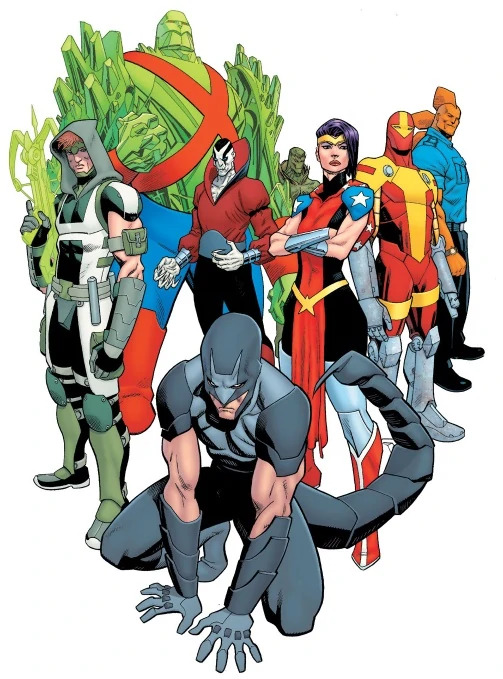
A riff on several of the superheroes published by Image Comics over the years, they’re worth having around for the occasional heroes of the multiverse groupshots for your big crossover comics and Dino-Cop turned out to be charming, but it’s doubtful someone with a big Spawn story in them for instance would use Spore as their outlet.
52. Earth 9

All I know about this is that this is a ‘what if superheroes really changed the world’ Earth, and when those are a dime a dozen, the additional conceits of the names of the various characters not at all corresponding to their traditional backstories and attributes, and being the brainchild of creator Dan Jurgens, are far from enough to sway me. I understand there are some fans out there who may heartily disagree, to be fair.
51. Earth Negative 52
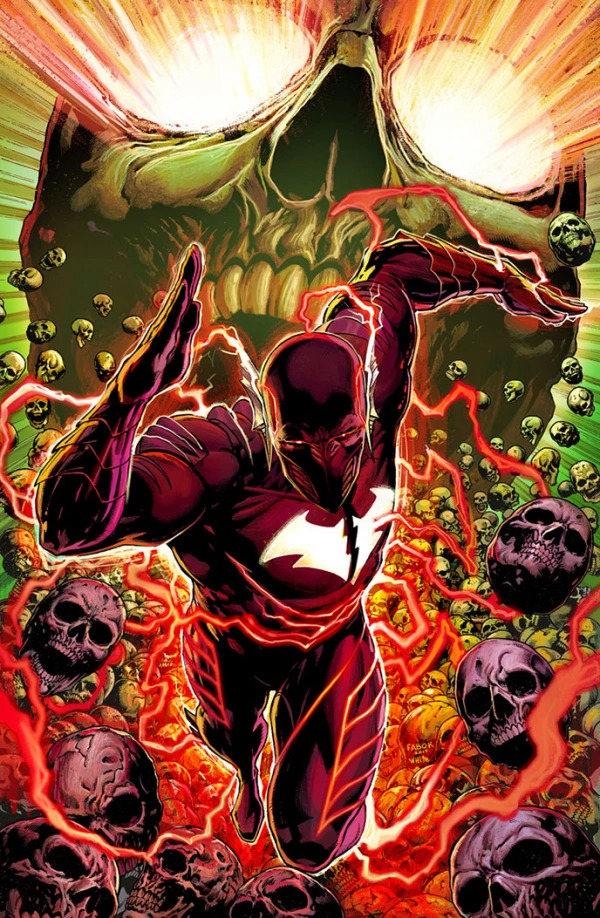
Another Dark Multiverse throwaway Earth, this time one where a Batman shattered by losing his various partners taps into the Speed Force so that he can finally be everywhere at once to stop all crime. This is distinct however in that he achieves this by defeating The Flash, chaining him to the hood of the Batmobile, and driving it so fast their atoms explode and merge, which is thoroughly rad and gets it big-time bonus points next to its contemporaries.
50. Earth 37

An Earth based on the DC works of creator Howard Chaykin, its conceit of being a world that progressed technologically far faster than our world but culturally remains decades behind us is interesting, but I’m not much of a fan of his work that I’ve read and most of what’s been drawn upon here doesn’t seem to have much of a following.
49. Earth 30
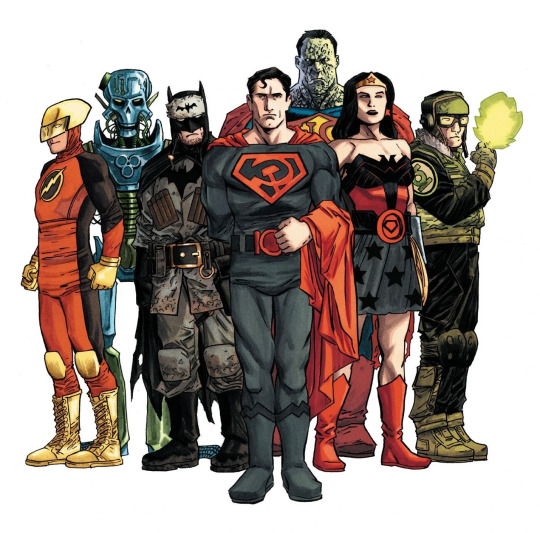
The world of Superman: Red Son, where Kal-L landed in the Ukraine and grew up to become leader of a global Soviet Union, before realizing he had deformed humanity’s development and faking his death. Leaving Earth in the hands of a Lex Luthor who while still very much a bastard found public approval in America for fighting Superman, Lex ultimately led Earth into a utopia that over time fell into complacency and became its universe’s version of Krypton, Jor-L (Luthor’s distant descendant) and Lara sending their baby back in time to survive and establishing a predestination loop. While several elements of the DC Universe are present in a limited capacity that could in theory be expanded on, Superman and Wonder Woman are the only superheroes of long-term note and both their stories are very much concluded, seemingly leaving little to do here except have the Superman with the hammer and sickle logo show up in event comics.
48. Earth 6
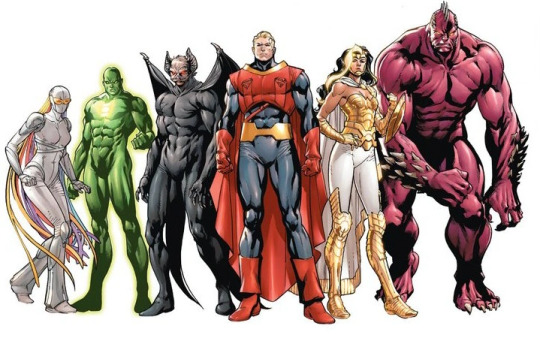
The world of the Just Imagine Stan Lee Created The DC Universe series, where the father of the Marvel Universe rebuilt several DC figureheads from the name and a few pieces of imagery up. The results were mixed at best, but a series of gorgeous artists involved in the projects mean the characters certainly look interesting even if it’s hard to imagine creators going back here in any meaningful capacity.
47. Earth Negative 1

A Dark Multiverse world where Superman turned on humanity for reasons unknown, and Batman deliberately infected himself with the ‘Doomsday Virus’ to gain the properties of the hulking monster and defeat his former friend. Now numbed to human emotion and vulnerability, this Batman hopes to spread the virus as to make humanity similarly indestructible, as well as shield them emotionally from what he has come to see as the false hope Superman represents. This Batman didn’t end up a major figure in the same way as The Batman Who Laughs, but the conceit is killer and I hope someone picks up on it one day.
46. Earth-52
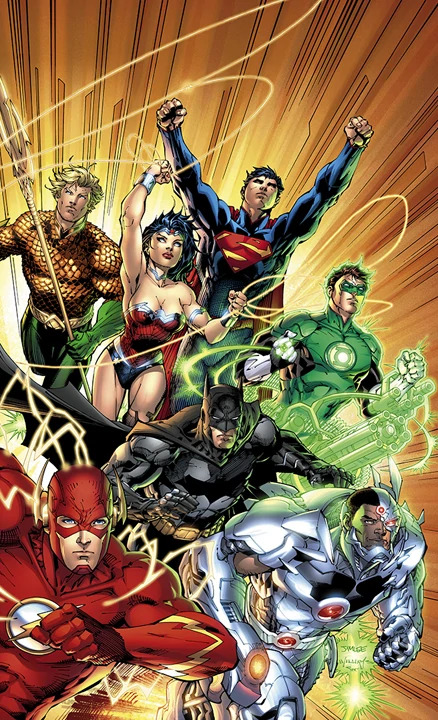
A universe somewhere outside the local 52, a ‘remnant’ of sorts of the main DC universe circa 2011-2016 prior to cosmic revisions resulting in the current setup. A world where superheroes had emerged approximately 5 years earlier and home to lots of dudes in very dumb battle-armor, most fan-favorite stories from this era have been carried forward into the current history, and its unique version of Superman under Grant Morrison - a socialist crusader in a t-shirt and jeans who battled corrupt institutions and cosmic supervillainy in equal measure - was depicted as set loose from his world after 2016′s continuity changes as a defender of the multiverse. While a significant part of DC history both in-universe and publishing-wise, there wouldn’t seem to be all that much left here worth exploring.
45. Earth 2
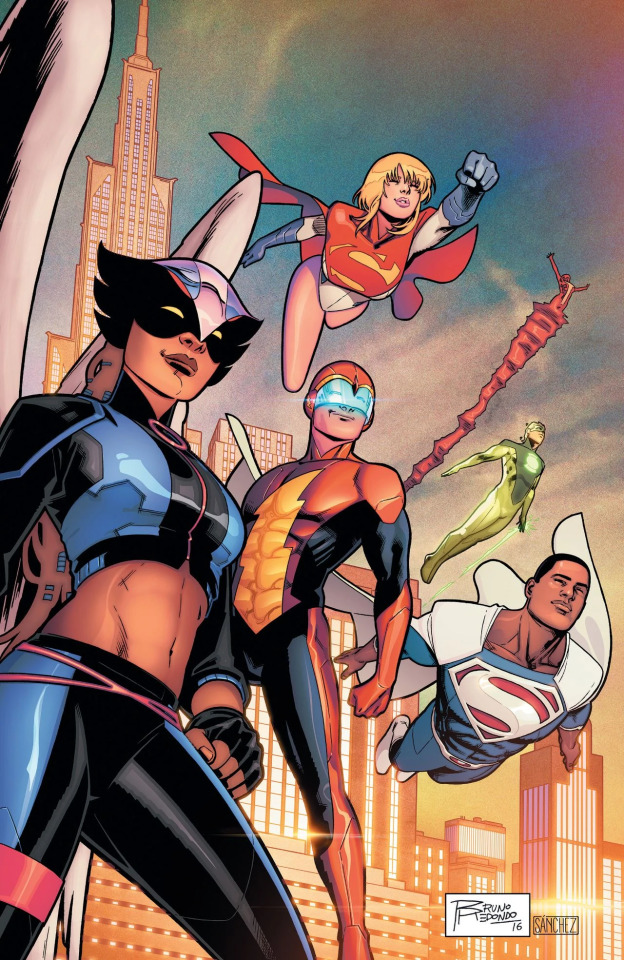
A world where Superman, Batman, and Wonder Woman alone represented the first wave of superheroes, they nobly fell in battle repelling an invasion of Earth by Darkseid. In time a new generation would emerge that were modernized, youthful iterations of the Justice Society of America, the superhero team predating the Justice League in DC’s publishing history. While the logline’s an interesting one and the successor to Superman Val-Zod debuted to some acclaim, for the most part this reinvention didn’t end up received well by either new or longtime fans, and a last-minute overhaul where this bunch was transplanted into a rebooted world without superheroes probably didn’t help. You still see them in crossovers and there are promising concepts, but this world seems basically dead.
44. Earth 50

When Lex Luthor ascended to the presidency and soon thereafter executed The Flash, Superman snapped, executed him, and took over the world alongside his allies as the Justice Lords, until they were ultimately overthrown by way of a parallel universe Justice League and a repentant Lord Batman. A Better World unequivocally rules, but given this is supposed to be those specific versions of the Lords rather than a new iteration, it’d be weird to see them up against any universe other than the DCAU. And, well...
43. Earth 12
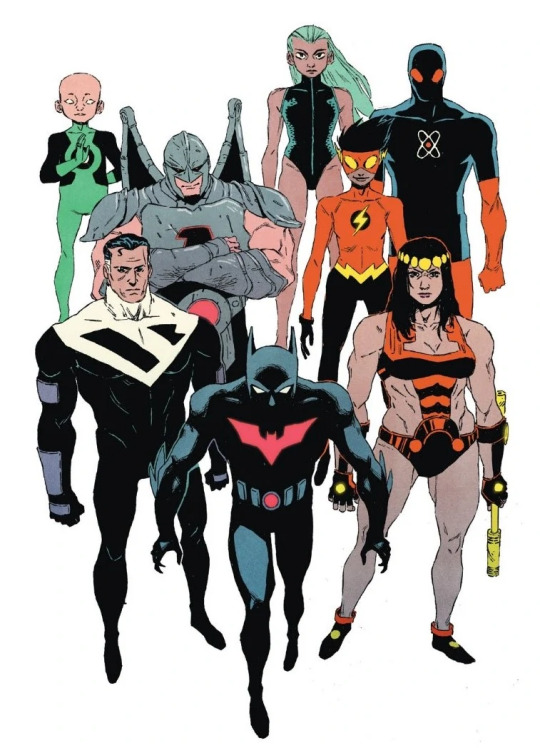
The DCAU, currently world of Batman Beyond and a future Justice League. The DCAU, you may be aware, extremely rules, but is also somewhat redundant in this context - the ‘regular’ DCU already has all its core components without too much aesthetic differentiation, and there’s already frequently a Batman Beyond in the future of said universe. It has its unique attributes that make people love it, it’s cool that it’s here, but on the macro scale it’s too clean an adaptation to bring much to the table to crossovers and whatnot, and you’d never see any further stories told there otherwise as really being part of the DCU cosmic landscape so much as a comic tie-in to the TV show.
(Also it’s odd this is placed here with the Justice Lords Earth as if to go ‘it’s secretly been part of the 52 all along, you just never noticed when it only crossed over with the one other!’ when there were two other parallel universes in the DCAU.)
42. Earth 43

A nightmare world haunted by the once-heroic, now vampiric Blood League, the obvious potential would be for this world to function as DC’s equivalent to Marvel Zombies. Recently however DCeased has come to fill that position, and while this world in practice if not concept skews more closely towards that source material as the former heroes still have vestiges of their old personalities - in theory distinguishing it as its own spin worth keeping around - it’s hard to imagine most takes on ‘Justice League but monsters’ won’t come out under the DCeased banner for the foreseeable future.
41. Earth 40

A world of pulp villains made to oppose Earth 20, these guys are simple but a hoot.
40. Earth 35 aka the Pseudoverse
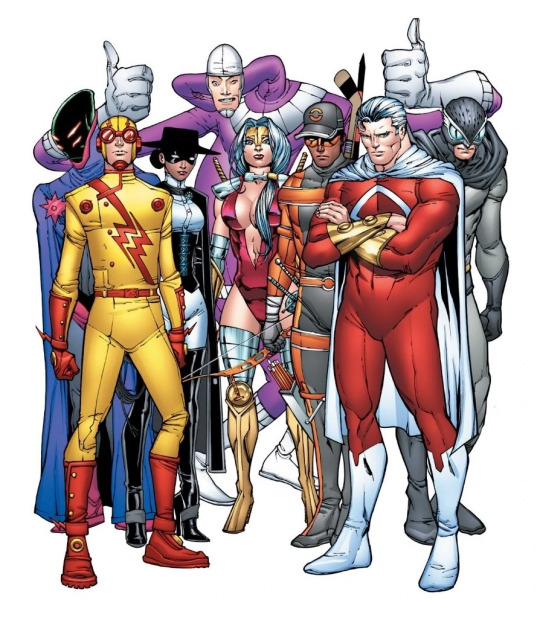
More analogues to analogues, this time of the Awesome Comics characters largely defined by Alan Moore in Supreme. This opens up the promising vista of ‘DC if it were designed by Alan Moore’, but in practice as demonstrated by his work with both DC and the analogues these mimic, that would just be...well, good DC comics, which you don’t need a whole extra universe for. The notion of this as a universe artificially created by Monitor ‘ideominers’ however both gives it a unique place in the multiverse, tackles its status as a pastiche in a unique way, and gets back to ideas of the power of imagination in both Supreme and Moore’s other works, so it’s likely there could be something to be done here.
39. Earth 11
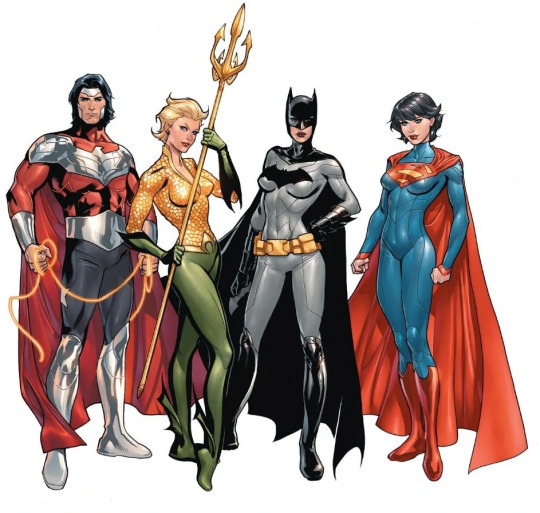
A bit of a study in contradictions. This is seemingly a rather straightforward ‘gender swap’ Earth with Superwoman, Wonderous Man, and so forth. Also, its version of Star Sapphire implied it’s not subjected to constant crises in the same way as the main universe it mirrors, maintaining a greater degree of consistency in the process. At the same time however it’s mentioned that the Amazons rather than leaving Man’s World for Themyscira shared its technology and philosophy with the world, changing it forever, suggesting a far different world from what we’ve seen in glimpses here. Until it decides one way or another whether it’s a simple mirror to the regular DCU or a radically different take, it hovers in a state of uncertainty.
38. Earth-2 aka Earth Two
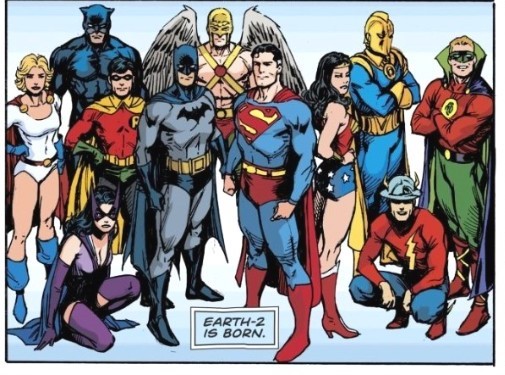
The original version of Earth-2, home to the DC Universe of the 1940s with aged versions of Superman and company and the original Justice Society of America. The first take on a DC universe that would progress in something resembling ‘real time’ rather than keeping the headliners as perpetual twenty-to-thirty-somethings, this was also the birthplace of heroes such as Power Girl and Huntress. I’m of the perhaps controversial opinion that this is a concept that was explored better in later takes: there’s a sense here that the largely forgotten follow-up generation eventually introduced, with the exception of the two heroes mentioned above, will never really matter in the same way as their still fully-active predecessors in spite of ostensibly taking over the family business, meaning you never quite actually get what you want here, which is to see a DC where things meaningfully change and move on - well into his middle age and his mentor’s death long behind him, Dick Grayson is still Robin. Add in the odd, ignominious demise of the original Batman and its Superman’s odd eventual fate - which slide from bizarre to intolerable if you accept the frequent implication that these are meant to be the original versions of them from the 1930s - and I can’t help but think the enjoyable high concept was never realized as well as it could be here.
37. Earth 4

The Earth of the characters of Charlton Comics who would go on to inspire Watchmen, this initially seemed like one of the most promising worlds after its debut in Pax Americana drew perhaps the most pronounced critical acclaim of any single issue in the past decade as the site for creators with something to say to work with Watchmen without actually touching that property. Now, however, Watchmen itself is in the mix: most wouldn’t reasonably go here while the material they’re truly referencing is now freely available (especially those simply wanting to draw fan attention by visibly playing with those toys, the way Earth 4 sidestepped) even though that world itself is now massively compromised past the original text, and with the ‘Watchmen Earth’ no longer an option and the characters themselves - if cleaned-up, more mainstream versions of them - existing in the DCU proper, this world’s role seems to have been largely stripped from it. I have to imagine there’s still potential here for those with the talent and commitment though.
36. Earth 44

A world where in the absence of natural superhuman beings, Doc Tornado created a Metal League of robot superheroes to protect the Earth. A promising concept definitely worth a few stories.
35. Earth 15
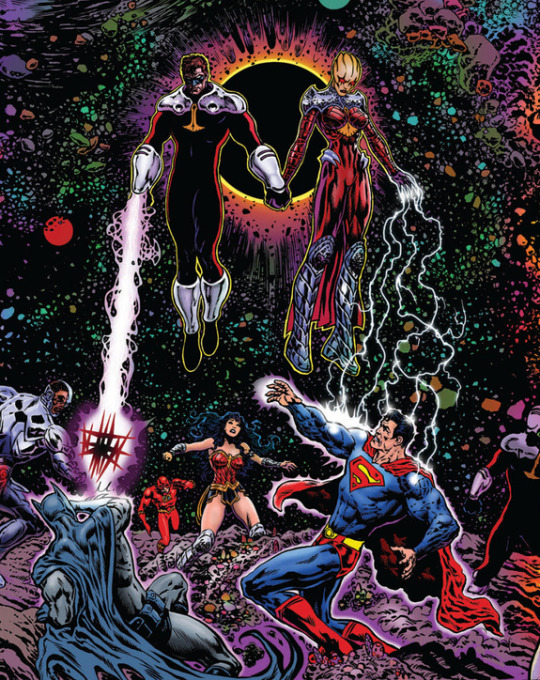
Once a perfect universe destroyed in a rampage by another Earth’s Superman, it was artificially reborn through the will of Countess Belzebeth - a cosmic vampire - as a copy of the Prime universe with the Green Lantern Corps replaced by Belzebeth’s despotic Blackstars, the uncertain and bitter heroes of this universe warped through the lens of Belzebeth’s perceptions of them had no chance against her forces. While its inhabitants are a bit samey what with all life having been subsumed into the diamond will of Blackstar Controller Mu, the idea of a conceptually weakened DCU being turned into an army against the rest of the multiverse makes for a terrific threat, and the prophecy of the ‘Cosmic Grail’ (a Green Lantern power battery lost somewhere in the multiverse) and that the First Lantern of the multiverse Volthoom hail from its original incarnation lend it some extra mythological weight.
34. Earth 32

A mashup world hosting the likes of the Justice Titans, Young Justice International, and the Doom Society. A world that’s home to Aquaflash will probably never have an ongoing all its own, but plenty of stories, miniseries, and even a brief line of comics have been based on mashup characters before, so there’s plenty of proof of concept for this being able to endure.
33. Earth 23

An Earth where Batman (naturally) is the only white guy on the Justice League, and Superman is not only President of the United States in his secret identity as Calvin Ellis, but the leader of the multiverse-spanning superteam Justice Incarnate. It reads like Morrison trying to do his idealized take on an ‘Ultimate DC’, a more diverse and politically engaged superhero landscape that doesn’t scale down its big ideas in turn, and if I were ranking it at the time it was introduced it would go much higher. The problem is that its version of Superman is modeled after Barack Obama, and that guy isn’t President anymore (and for that matter his legacy seems to grow more complicated by the year). As a result the vibe goes from triumphant to wistful mourning if not outright bitterly ironic, and that’s a needle that would have to be threaded before doing any substantial work here.
(Also, since several Justice Leaguers here rather than being made black are replaced with various black counterparts they’ve had over the years, that means Wonder Woman here is the 70s Amazon Nubia. And, uh, that name is something that would have to be...something.)
32. Earth 19
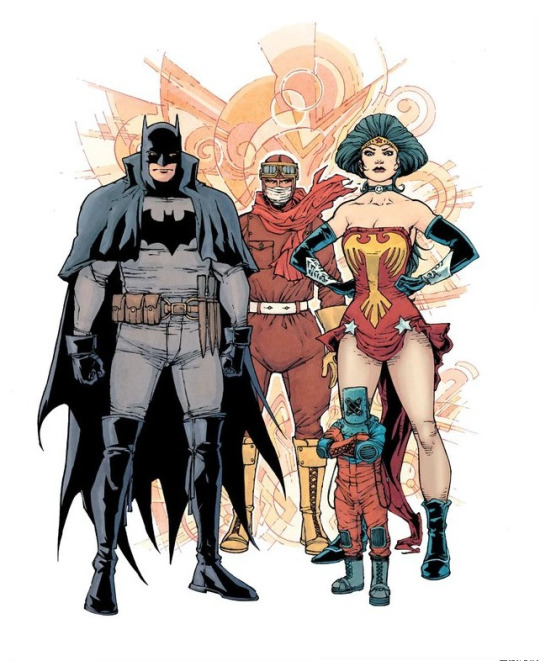
Steampunk superheroics; superhero period pieces are usually fun, and this is built on a foundation of pretty Mike Mignola art (though confession that I’ve never read Gotham By Gaslight), so sure, this one has potential.
31. Earth 18
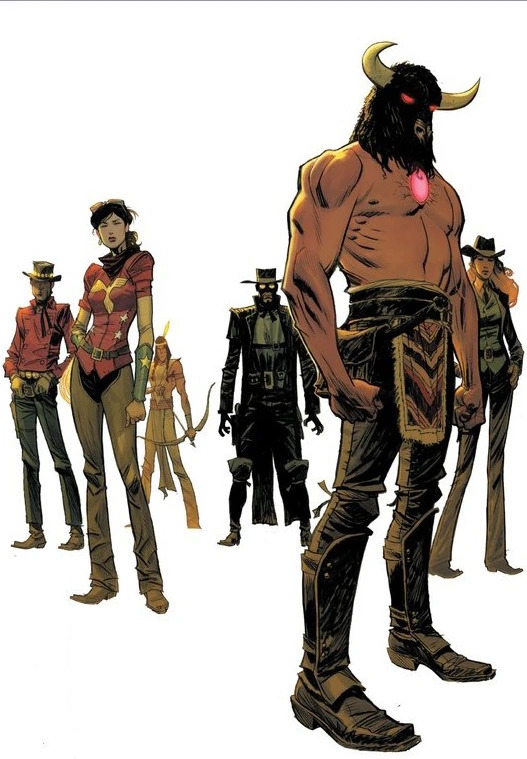
Same as above but cowboys instead. This gets extra credit because cowboys mesh better with superhero conventions, and the additional twist of this world being frozen in history by the Time Trapper, forcing them to approximate modern technology with 19th century resources.
30. Earth 31
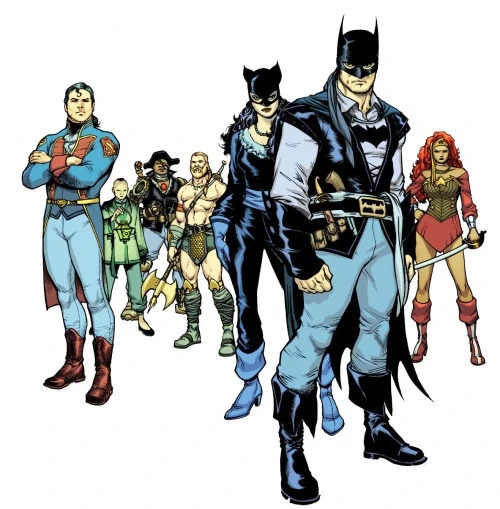
A post-apocalyptic waterworld where humanity is protected by Captain Leatherwing and assorted other pirate superheroes. Another ‘superheroes but in another genre’ setup, the post-apocalyptic, environmental twist makes it unfortunately more relevant than its peers, though I don’t think it’s quite the best end of the world as we know it on the list.
29. Earth 42

Home to the adorable, innocent world of the chibified Little League...secretly robots unwittingly enacting an endless stage play for the malevolent being known as the Empty Hand, running scenarios of his devising in preparation for a coming war with the rest of the multiverse. It’s a neat little multipurpose world, able to be played both as amusing contrast, or as parody whether light-hearted or cynical, in their endless ‘playtime’.
28. Earth 7
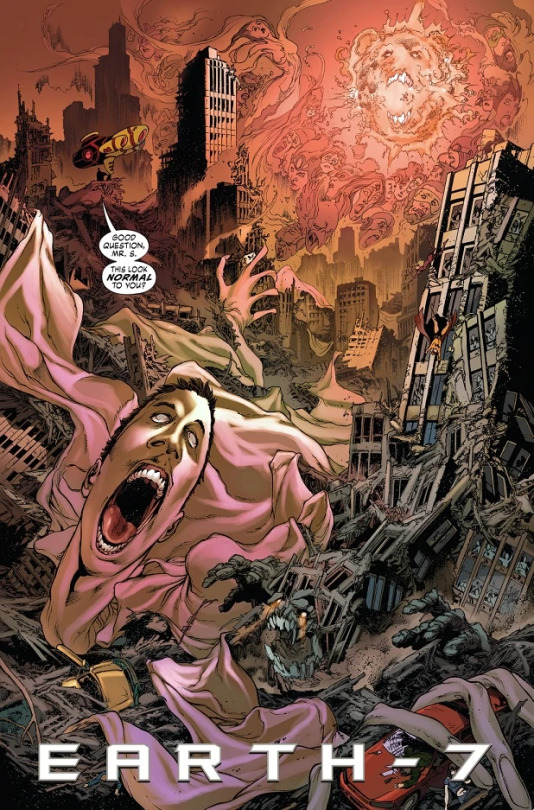
Formerly home to counterparts of the heroes of Earth 8, it was shattered by the Empty Hand’s forces and its desiccated cities made his throne, the zombie hordes that were once its champions his armies. The ‘Ultimate Marvel’ to Earth 8′s Marvel proper (and now Marvel Zombies), the idea of the broken remains of the cool version of the cool superhero universe as the lair of the ultimate evil has a certain appeal.
27. Earth 52

The last of the Earth 52s on this list, this newly added 53rd core Earth is home to Frank Miller’s Dark Knight books. Much as the reception to it over the years has become...mixed, at best (for my money Dark Knight III is the only one that’s not at least bad in a very interesting way, and even it still has its moments), the surprised generally positive reception to the most recent entry in Dark Knight Returns: The Golden Child suggests there’s still life in this oddball corner of the cosmos yet.
(Fun fact: this was Earth 31 in a previous version of the multiverse, and Morrison intended it to be included as such in Multiversity - hence why Earth 31 is made up of inky scratches on the Map - but Miller requested he not since he wanted to keep his domain separate from DC’s ongoing storylines. Instead he agreed later to Scott Snyder and Greg Capullo’s use of it in Dark Nights: Metal as DKR is famously Snyder’s favorite comic, bringing it in as Earth 52.)
26. Earth 47 aka Dreamworld

Where the Love Syndicate of Dreamworld dwells, baby: all is groovy. It’s incredibly specific in both era and theme, but a psychedelic universe with heroes to match invites tons of possibilities.
25. Earth 10 aka Earth X

It’s the Nazi Earth that sucks. It has superheroes who unnervingly are about as well-intentioned and effective as the standard set in the New Reischman, opposed by the few remaining dregs of the Freedom Fighters led by Uncle Sam; only their Kal-L, Overman, once Hitler’s weapon, truly understands the scope of the atrocities that led to their ‘utopia’, having grown a conscience too late and ever-aware that no feat in the present can ever redeem the oceans of blood on his hands. You can do horrifying introspective stuff with them as in their Multiversity chapter, you can tell Freedom Fighters stories like the recent miniseries, or you can just have the Justice League show up to fight the Nazi Justice League. A Nazi world is a standard one in multiverse stories for a reason, you don’t get easier targets.
24. Earth 5G

The DC universe that’s...sort of here and sort of not. Doomsday Clock and other upcoming stories appear to be shifting us over to this, but in most of DC’s line of titles the leap hasn’t taken place yet. As we haven’t seen the bench of successor heroes apparently primed to take over only so much can be judged, but the vast changes suggested by the new ‘official timeline’ that’s been leaked suggest a bizarre attempt at incorporating as many of their editorially-favored biggest hits as possible into a bizarre selective mishmash, without particularly serving the status quos any of the constituent characters said history is meant to bolster (with the exception of Wonder Woman, now framed as the first superhero, which would at least be interesting and a deserved bolster to her profile if there were any particular impression her new standing would be meaningfully followed-through on), while also not only reinstating the mutually destructive retcon of the JSA as preceding Superman, but taking the absurd extra step of actively presenting them as his inspiration. Of course we haven’t seen it in practice yet, and at the end of the day good stories will surely still be told here, but the foundations here are about as shaky as they’ve ever been for the ‘core’ DCU as a wholehearted capitulation to placing dotting all the i’s and crossing all the t’s over the actual narrative logistics of making a shared universe function smoothly.
23. Earth Negative Zero aka Betwixt
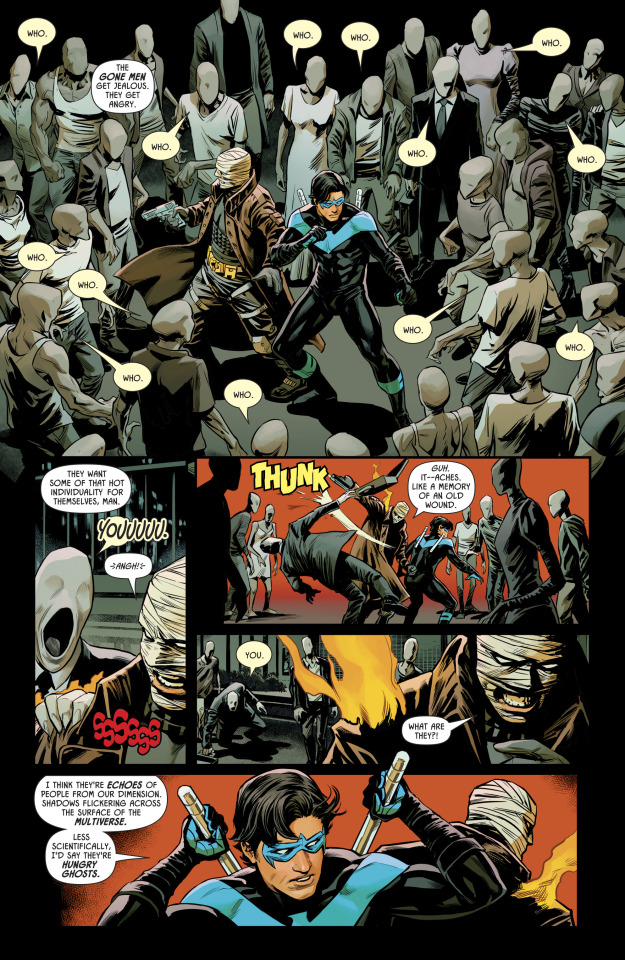
A world where those whose senses of self entire disintegrate fade away to seeking to feed on those still well-defined, this bears similarities to the realm of Limbo where ignored superheroes reside, but with just enough conceptual differences and a hellish, malleable twist that makes it the best thing anyone’s come up with to date to do with the Dark Multiverse.
22. Earth 48 aka Warworld
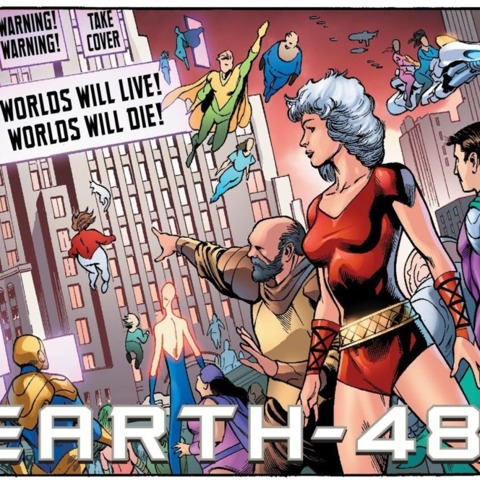
While its iconography is rooted of all things in castoff characters from Crisis On Infinite Earths and no-hopers from Countdown To Final Crisis, the actual conceit here of a world where literally everyone and everything is a superhero that operates by superhero rules, a world built by the New Gods as defenders of reality, is wide-open and tantalizing.
21. Earth 38
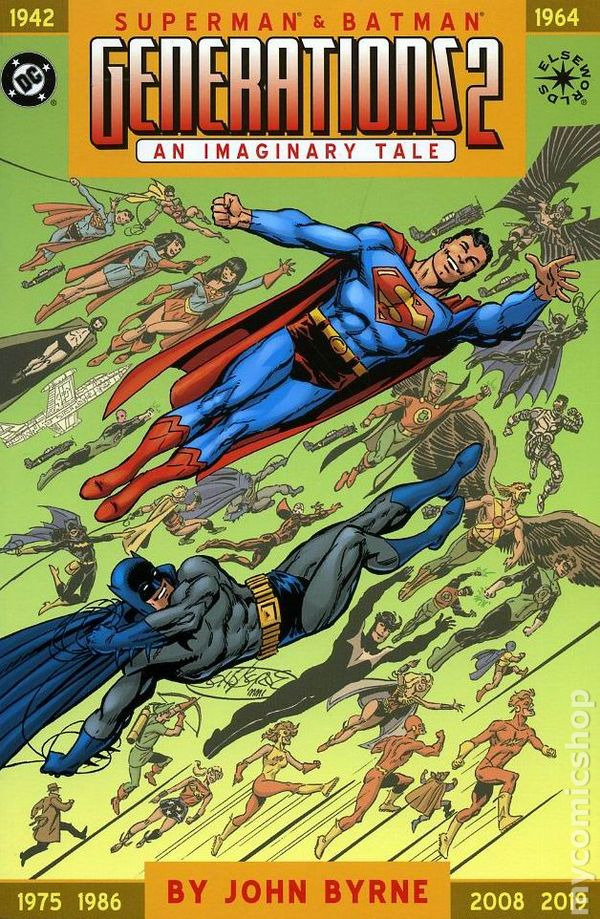
Another major shot at a DCU that aged in real time, this version has its own idiosyncrasies but far more of a sense of forward momentum and meaningful change, with the original Superman and Batman still leading the pack one way or another but successors to both them and the rest of the heroes truly stepping up. Also the predominant hero of the 21st century is Knightwing, the grandson of both Superman and Batman who has only partial Superman powers but also Batman training, which is just really cool.
20. Earth 3
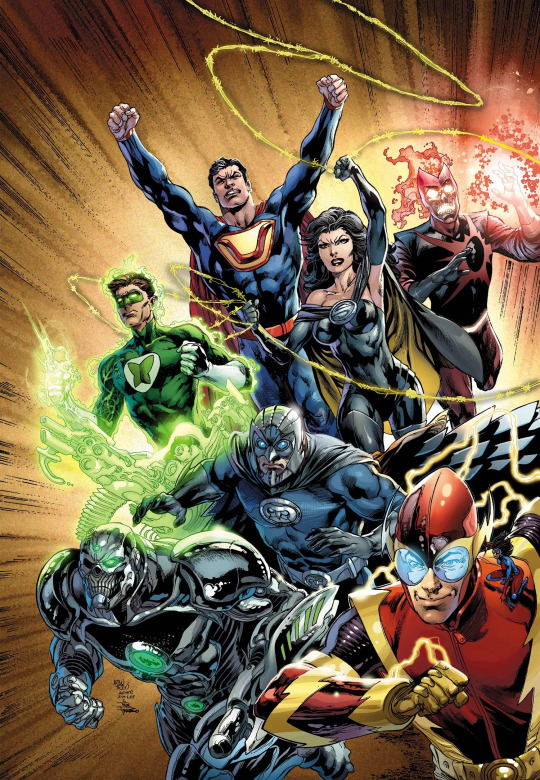
The good ‘ol classic evil mirror universe, where strength is the only law, the forces of evil always win in the end no matter how bright the day may become, and thus the Crime Syndicate operates as it pleases. It’s never quite as interesting as you want it to be - its villains are largely one-note - but its warped societal and cosmic rules, and that each character has a handful of twists on the mythology of their counterparts rather than being an exact (if morally inverted) duplicate, means it could easily one day come to live up to its obvious potential in the right hands.
19. Earth 21
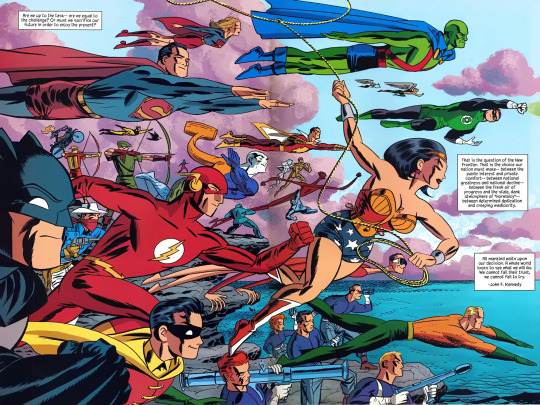
Here, most superheroes were forced into retirement after World War II by McCarthyist paranoia, but at the dawn of the 1960s the few remaining and a new generation are emboldened to step back into the light, spearheaded by the Justice League of America. DC: The New Frontier is a modern classic, with a direct standalone follow-up virtually out of the question; as it doesn’t quite lead into the world of the actual 1960s DC Comics either, its sole function in its capacity as a world in the multiverse is as a 60s ‘period piece’ Earth. Given that’s where most of the architecture of DC as we now know it was built however, that’s hardly a problem.
18. Earth 26 aka Earth C
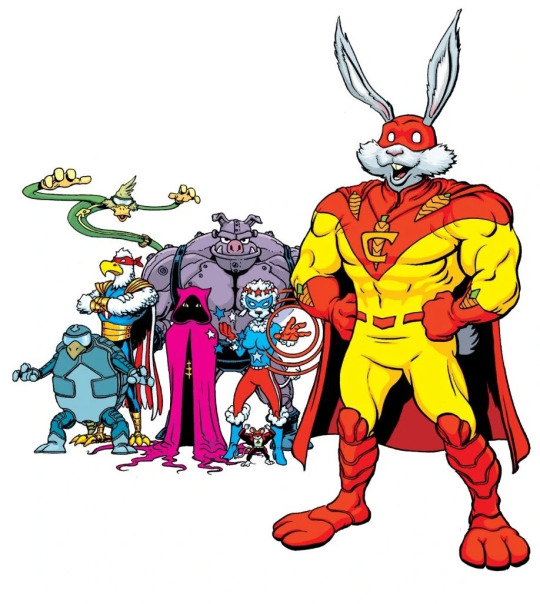
Funny animals are fun, and in a superhero universe that means you get superhero funny animals, courtesy of Captain Carrot and his amazing Zoo Crew. What’s not to love?
17. Earth 22
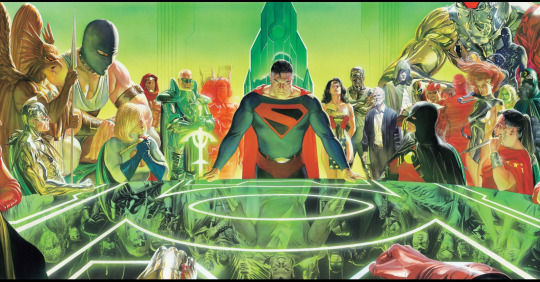
While time has somewhat dimmed the acclaim that originally surrounded it, Kingdom Come and its tale of a Superman coming out of retirement alongside his allies to try and reign in an out-of-control new generation remains a landmark moment in the genre, and in many aspects still holds up. Unlike many stories of its stature this world has always played nice with the mainline universe in terms of guest appearances and crossovers, including works by the original creators Mark Waid and Alex Ross, and as the most iconic and conceptually expansive work to date set in a DC universe that has joined in the march of time, that makes it a prominent and useful one to have around.
16. The Antimatter Universe of Qward aka The Reversoverse aka the Anti-Verse
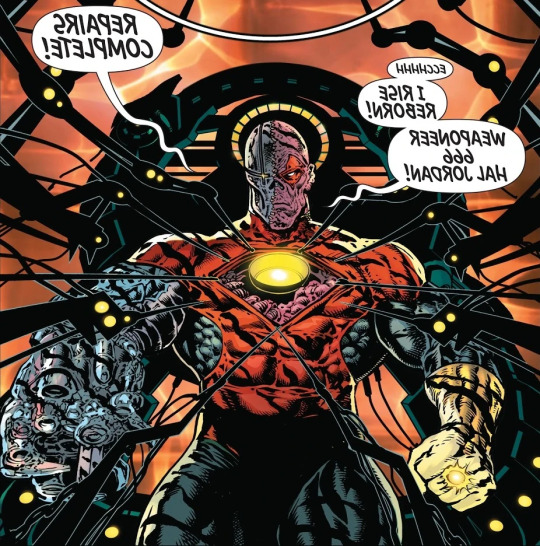
The original dark flipside of DC reality, this has occasionally also played home to the Crime Syndicate - and their best stories by far, to boot - but mainly serves as a home base to the Weaponeers of Qward and occasionally Sinestro. While largely unexplored it has a massively central place in DC’s cosmology and the birth of the multiverse, the glimpses of a society of pure evil in early Silver Age Green Lantern and JLA: Earth 2 are far more fun and interesting than anything seen in Earth 3′s history, it’s about to get even more room under Morrison to find definition, and as the ultimate mysterious Forbidden Realm of the DCU the possibilities could be essentially endless in the right hands.
15. Earth-1985 aka Earth One
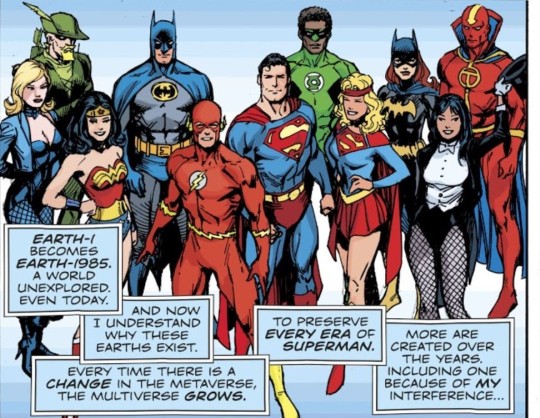
The DC universe of 1956-1986, and the dragon an entire generation of creators have spent their livelihoods chasing as the ‘classic’ iteration, as evidenced by one of them flat-out confirming it still exists somewhere out there. While that makes it frequently redundant when the main DCU is trying hard to mimic its feel - a few divergent notes such as Maggin’s idiosyncratic take on latter-day Superman and its version of Jason Todd aside - the prospect of a DCU that remained in that mold forever to a greater or lesser extent even if time may have moved forward could, in principle, free the main universe to go off in wildly different directions, knowing this image of DC always exists in its own space to return to when so desired rather than actively turning the current status quo to face backwards.
14. Earth 17
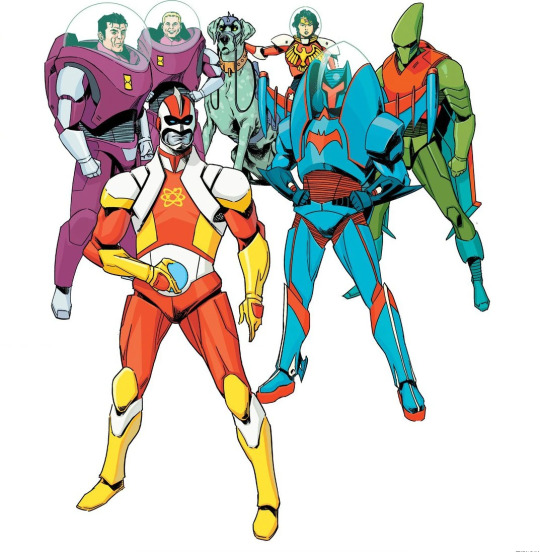
The Atomic Knights of Justice quest across the radioactive landscape of Novamerika in a world decimated by nuclear was in 1963 in search of Earth 15′s Cosmic Grail, their only hope against the coming of Darkseid. A mashup of the Justice League with the protagonists of one of the most fascinatingly bizarre comics of DC’s Silver Age in the Atomic Knights, a mythic quest, and most relevantly “What if Fallout had superheroes?” leaves this feeling like it’s just waiting for its moment to shine.
13. Earth 8 aka Angor
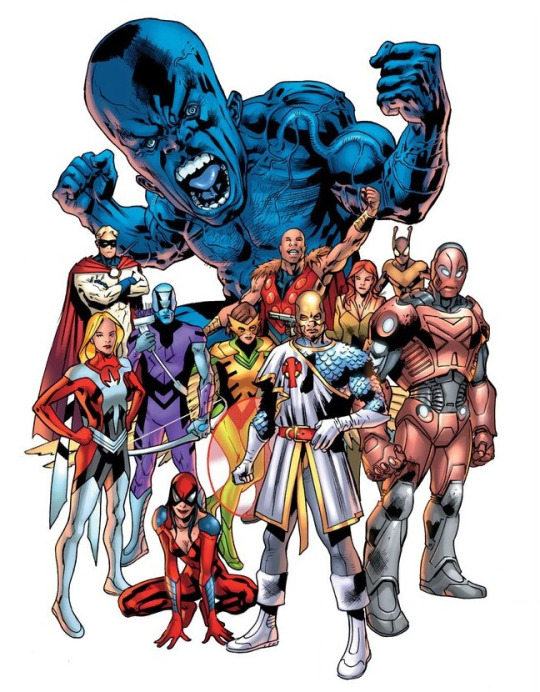
Known across the rest of the multiverse as the protagonists of the Major movies and comics (as opposed to the sub-imprint Essential Major reflecting Earth 7), in actuality the non-actionable champions of Angor - the Retaltiators, the G-Men, the Future Family, and The Bug, among others - are as real as any other superheroes, and while they struggle under the weight of both mistrust by the general public and frequent in-fighting, they’ve thus far protected their world from threats global, universal, and multiversal alike. The Big Two having stand-ins for each other is a longstanding tradition for good reasons: it not only allows for crossovers where the legal stars don’t align (and adds an extra fun shock of recognition whenever the reader realizes what’s happening), but provides each of them an ongoing version of those archetypes to play with within the confines of their own narrative, whether as contrasts or bending them to fit the tone of a very different shared universe than they were originally created for.
12. Earth 16 aka #earthme
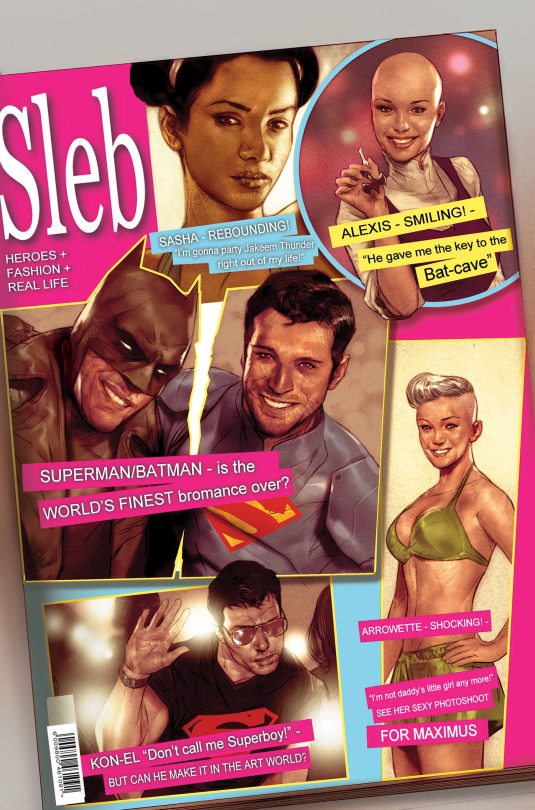
The world where every sidekick, super-son, successor, and short-lived ‘new generation - of HERO!’ at last seize their moment in the sun...in a world already saved by their predecessors, with little left to do but lap up lives of super-celebrity and wish for one, just one little alien invasion or immortal tyrant to justify their existences for them. The best of DC’s futuristic/what-if-time-mattered alternate Earths in my opinion, taking to its logical conclusion the notion as stated by Morrison in interviews that as the Justice League will stick around as long as there are evils that need fighting, the ever-present promise of the torch being passed could only ever truly, permanently take place in a world where the job was already redundant. Playing as it does with in-universe history, real-life publishing realities, celebrity culture, generational divides, and the question of what being a superhero even means sans the usual confrontational justifications, it’s by its nature only going to become more expansive and interesting a commentary as time goes by and the regular DCU goes through its cycles of reboots, rebirths, and returns to form.
11. Pocket Universe 54471
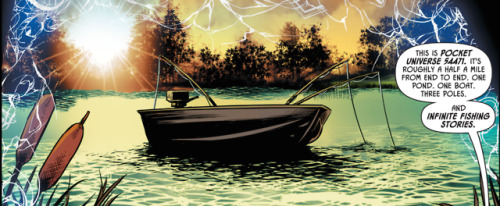
Exactly what you see: Superman made a little pocket universe a half mile wide to go fishing in and he was gonna take Bruce and Dick there for the former’s bachelor party, and he knows about and/or created at least 54470 others. It’s absolutely delightful not only in its own right, but as an opening of the door to what the multiverse can mean in DC comics as a sci-fi idea generator beyond riffs on existing properties, while still being presented with a distinctly DC sense of playfulness.
10. Earth 45 aka Earth 45™

The origin of one of the best Superman villains of all time in Superdoomsday - the Superman idea in a world without him brought to life but twisted by committee into a murderous living brand - a horrifying corporatocracy standing for all Superman and company are meant to stand against, and an enduring threat with the world still in shackles and those in power still able to dream to life whatever vision they please of absolute power to be wielded in their name.
9. Earth 36 aka Terra

Justice 9, the defenders of Terra - or I suppose Justice 7 now after the losses of Optiman and Red Racer, though how long does that matter in a superhero universe? - is the most interesting of the direct analogue groups for my money. Technically speaking they’re another twice-removed set like 34 and 35, standing in for the heroes of Big Bang Comics, but given my understanding is that there’s no major “Like the DC heroes, BUT” twist in that book the way Astro City and Supreme have other than a retro ‘good old days’ bent (which definitely isn’t the case here with at least two queer members), Justice 9 basically function as direct analogues for the Justice League...in the same comics as the Justice League. To me, that’s actually fascinating: one of the most useful elements of stand-in characters like this is the ability to tap into the iconic power of archetypes without the familiarity surrounding the actual figures, in the way Planetary for instance uses just enough distance from the source material to make a couple dozen decades-old pop culture touchstones feel completely new, and this implements that approach to the material to the DC characters with heroes who can actually themselves team up with DC proper. As many approaches as could be taken with that though, that potential alone probably wouldn’t be enough to shoot it this high up the list if not for a major additional factor: in the same way that in the old-school DC universe the heroes of Earth-1 had comics reflecting the adventures of the heroes of Earth-2 long before learning they were real in another universe, DC Comics are published on Earth 36. Aside from the neat trick of putting our leads in the same position as the Golden Age heroes, it means Justice 9 grew up with the Justice League as their heroes in the same way as us the audience before becoming heroes themselves, and then they grew up to learn they were real. These folks absolutely deserve to become multiverse standbys.
8. Earth 51
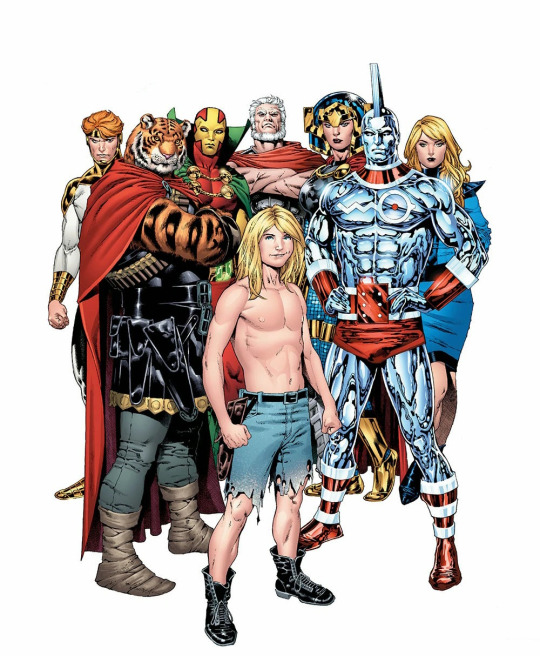
The Earth where all Jack Kirby’s ideas live as a single cohesive world and adventure. No further justification is needed.
7. Earth 13

A world of occult danger where DC’s traditionally superheroic magical figures such as Zatanna and Deadman are given the full Vertigo horror treatment, while the more intimidating and morally dubious figures such as Etrigan and John Constantine get logos and codenames. Not only an expansion but an offputting inversion of one of DC’s most acclaimed corners, this oddball bunch could bounce off of the capes and tights crowd as easily as your Shadowpacts and Justice League Darks, in ways no other team from any corner of the multiverse could.
6. Earth 20

Pulp champions of a 21st century that remains aesthetically moored in the early 20th, of the handful of Earths converting DC standbys into different genre territory in the local 52 the homeworld of the Society of Superheroes hits hardest, given the role the likes of Doc Savage and The Shadow played in that time shaping the conventions of superheroes as we know them. Add the wealth of concepts presented in their oneshot and the decision to hew away from the traditional Justice League riffs of parallel Earths, and of all the truly new worlds introduced in Multiversity, Earth 20 is the one that most feels like it could support an ongoing all its own.
5. Earth 29 aka Htrae

You gotta have Bizarro World. You just gotta.
4. Earth 33 aka Earth Prime

The in-universe representation of our very own pale blue dot. Whether it’s the birthplace of Superboy Prime where assorted DC creators had to deal with a visiting Flash and Superman throughout the 60s and 70s, meta games with the various incarnations of Ultra/Ultraa, a looming threat yet also victim in need of rescue through the eyes of Justice Incarnate, or the unwitting home of the ‘Superman’ or ‘Batman’ of Kurt Busiek’s off-center takes on the characters in Secret Identity and Creature of the Night, over the years DC has shown a decent amount of restraint in not going back to this particular well too often unless someone has a really clever tale to tell, and as a result it has maybe the single best batting average of all the ‘parallel Earths’ that have been regularly returned to by DC over the years. Give yourselves a hand, folks!
3. Earth 5 aka Thunderworld

Home not to ‘Shazam’, but Captain Marvel and the Marvel Family in all their glory, a technicolor world playing by the rules set down by Otto Binder and company where a superhero can literally battle planets and the most dangerous villain of all may be a very, very mean worm with glasses, a place of dream logic and childish innocence even by the standards of superhero comics. Captain Marvel at his best is one of DC’s most iconically potent players yet many seem to agree that much of his woes in recent years have come down to trying to find a unique space for him in the DCU proper. While I don’t know that it’s at all impossible to make that work, it’s certainly true that Marvel as he was originally presented doesn’t quite make sense in that world, whereas back in his own he keeps a flavor entirely unique to himself and his partners, whether for solo adventures or teamups with the heroes of the other worlds, playing it straight or examining some of the unsettling implications established by Thunderworld or finding a new way to make it work. Much like Bizarro World, it’s simply a locale the place doesn’t quite feel whole without.
2. Earth 25 (?)

While I’m a bit dubious on it definitely being Earth 25 in the core 52 based on interpretation of an offhanded line from Mr. Terrific (it has a multiverse all its own!), the fact of the matter is that America’s Best Comics came roaring out of the gate as proof of its own title, and basically didn’t stop until it ended. A couple after-the-fact Tom Strong miniseries (containing perhaps the most singularly cowardly hack move in the history of shared universe comics in undoing the end of Promethea) can’t detract from the core ABC lineup being made up of some of the most singularly clever, gorgeous, and heartfelt superhero titles to hit the stands, pretty much the platonic ideal of what you want books like these to look like. If this universe can hang around in any capacity at all until someone god willing picks them up again in a big way, it’s a win in my book.
1. Earth 0 aka Prime Earth

The extant version of the main DCU for at least a little longer, it really does feel like more than just about any version before it - at least for my money - they finally got all their ducks in a row, albeit right before blowing everything to hell. Most of the stories you really want to still have some sort of weight for the major characters are still in play to be built on, and most of the stories that clearly needed to be dropped are dropped. The cosmology’s fleshed out and expanding, the big names mostly work as they should ideally work while still heading into new territory, the JSA is mysteriously somehow around in the past without interfering with the primacy of Superman and the Justice League as the first known superheroes (a mystery that will never be resolved now due to the current reboot; damn shame) and the Legion of Superheroes have a new coat of paint, and there’s room for stories cosmically massive and intimately personal and utterly bizarre throughout the line rather than there being a single overriding idea of what these books should be. It may not be the perfect DC Universe by any means, but it’s a real, real damn good one, and of course without that thing, none of the rest of these universes would have been there in the first place.
81 notes
·
View notes
Text
GIVE A MAN A MASK ...
As always, a disclaimer that this is my personal lukewarm take, imbued in my portrayal. I do not regard the following analysis as an objective truth to all - but an important facet to the writing and characterisation on this blog.
The use of masks in the horror genre has consistently been a crux to unsettle its audience. By not showing a face we perceive as ‘true’ there is the instinctive notion that such a character who wears a mask has something to hide. A masked villain is intentionally separated from their cast of heroes, victims and extras, all of which are unveiled. In Michael’s case, his mask is meant to unnerve these characters before it terrifies, at first sight forcing the onlooker, Laurie, to question whether she has something to fear at all, if she is being too superstitious - especially on Halloween of all days.
This is achieved with the mask’s design, an uncanny impression of a man’s face (originally William Shatner’s...). The facial structure alludes to an initial, unremarkable presence of a passing stranger, but the hollowed, black eyes and impossibly white pallor intrude - presenting a loss or absence of humanity. One of the most succinct explorations into this effect is by Alexandra Heller-Nicholas in Masks in Horror Cinema: Eyes Without Faces, most relevantly quoting J.P. Telotte, ‘[the mask] is neither grotesque or distorted nor natural, but more resembling the face of a dead man.’ With this analogy, it becomes clear that Michael’s face serves as a reflection of the fate of his victims, inhabiting both the fear he evokes and death he inflicts. Doctor Loomis prophecises this in his monologue, detailing the ‘blank, pale, emotionless face’ and ‘the blackest eyes, the devil’s eyes’. What makes this a prophetic monologue is that this reading of Michael’s maskless face becomes a reality which we and Laurie have experienced, and will continue to do so with Michael’s ‘mask’. It is now an argument of whether the mask is a mask at all, but Michael’s true face. If Michael himself is aware of this encapsulation of both fear and death, then Loomis is a mouthpiece for Michael’s own self-fulfilling prophecy, embracing the belief of being ‘pure and simply evil’ - using the mask to enact his role, as Murray Leeder claims, ‘Like an actor in a Greek drama, [wearing] his villainy plainly on his face,’ but I would modify that it is not ‘on’ his face but ‘as his own face.’ In Dead by Daylight, his place as a killer among killers still may not deter from how eerie he is to see from a survivor’s perspective. Applicable is thegamingmuse’s analysis of Valtiel in Silent Hill 3, ‘He looks more human than almost all the other creatures we see, but that only makes him more upsetting. The similarities make the differences stand out all the more.’ Michael stands within the space between the familiar and unfamiliar, what we know and what we don’t know. In the film, he demands to be looked at, especially in Haddonfield where he agitates the suburban safety of the town. And when he is not in the scene at first glance, he still demands to be looked for because we know he doesn’t function within the same physical laws as a human, but we do not know the exact extent of what that power means. When comparing his 1978 mask to the 2007 remake’s, the original mask’s ‘wholeness’ is much clearer. For the most part, Carpenter and Hill’s Michael is pristinely presented - his mask unblemished, suggesting a fully realised sense of self in both his role and belief of being a villain. In contrast, Zombie’s Michael is damaged and deteriorating. Befitting the director’s more psychological interpretation of his character ambling between the role of victim and villain - a cracked and marred mask portraying a more ‘damaged’ and unstable sense of self, a malformed identity hinged upon reuniting with his sister - and when he fails to do so that mask and identity becomes all the more ‘incomplete’ in the sequel. Whereas in 1978, Michael is (presumably) completely extricated from his family after murdering Judith, assured and arrogant in his character of stalker, perpetrator and killer. What is notable is its only point of damage would be a hole in the neck from Laurie stabbing him with a knitting needle - leaving a permanent mark in the same area of anatomy Michael exploits to overpower his victims through strangulation. Her action in the narrative showing her refusal to be disposable — consequentially having ‘living’, tangible proof. She, along with Loomis, is one of the rare few to try and prove his mortality - only to result in him getting back up, asserting his enduring immortality. This immortality is even foretold in his face, ever watchful with an unblinking stare - bearing a likeness to ivory statues and figure sculptures throughout Western art history, depicting culturally significant fictional and historical figures. Just as sculptors like Michelangelo, Bernini and Rodin have brought such characters to solid life, Michael is immortalising himself just as these statues are commissioned to immortalise their subject, mythologising himself (which ... considering his fandom cult status). If he is likened to a marble statue then he assumes the infallibility of the same material, his silicone flesh does not decay. Simultaneously, we know he can move therefore we are prey to an ominous atmosphere, led to think when he is not immobile within our line of sight, he is still able to walk behind us without our knowing. It also raises the question of if his mask is what grants him infallibility to death... In contrast to his impassive white mask, his smiling clown facade at the start of the movie seems to be a hyperbolic mockery of emotion. Compared to Zombie’s choice of Michael wearing his most recognisable mask when murdering Judith, Heller-Nicholas stating, ‘Here the mask has a distinctly adult look, and on Michael’s body it suggests he is a child capable of committing ‘adult’ crimes.’ Whereas in the original, the clown mask has a disarming playfulness and infantile innocence, further adding to the shock reveal that this was a child who killed his older sister. For five minutes (or a few seconds if you were unaware of his age) he fits within the uncanny child trope, defamiliarising what we expect a child to be capable of, the unmasking of a child doubles as the unmasking of a killer. More so is it unnerving to consider how much in the same way clowns exist between comedy and tragedy, evoking laughter from their audience with staged stunts going awry and choreographed misfortune, the young Michael derives joy from the tragic act of murdering his sister. It is also important to note that Judith immediately recognises her younger brother while he is masked, solidifying he will be the mask he wears. Fifteen years later, his victims are deprived of this same familiarity and knowledge. The sinister truth of the clown costume is brought home all the more when Jamie Lloyd chooses similar garb as her trick or treat outfit in Halloween 4. Later fulfilling - or possessed by - the same prophecy of evil when killing her foster mother at the end. Throughout the movie, everything she feels is written on her face, she is unmasked and entirely honest in her terror, pain, brief happiness and sympathy until she has inherited Michael’s evil, the red pom-pom nose referencing Michael’s own crime when he was a child, while the eyemask also references his visibly void gaze now – adopting his mask’s dead-set impassivity with her own face. Again, the child’s crime is shocking but there is no moment of unmasking, rather the opposite: an inherited mask. Even beyond the Halloween franchise, the significance of Michael’s mask is brought back into the pop culture consciousness through the subversion of other killers in the same genre. In Scream, Wes Craven creates a direct relationship with Halloween while transgressing from it, parodying the slasher horror formula. This is even evident when comparing Michael and Ghostface’s masks; the two are similar in their pitch black eyes and white faces but where Michael’s is intended to evoke fear in the audience and narrative’s victims, embodying a disturbing synonymity between an everyman and dead man, Ghostface’s mirrors the screaming faces of the audience and characters - mocking their fear. Much like Jamie Lloyd, Ghostface credits a certain lineage to The Shape, but where Jamie unwittingly follows in her franchise father’s (or uncle’s) footsteps, Ghostface is the teenager trying to rebel against his forefather’s conventions. Ultimately, Michael’s mask serves as a blank page or screen to project our fears, ideals and theories onto. As much as anyone, including his own psychiatrists, would want to know why he wears a mask, there will be a range of readings that can only be individual interpretation because the only certainty is the mask is designed, as a cinematic device, to be emotionally provocative of caution and fear. Nonetheless, my own interpretation is exactly that - he wears it to primarily provoke a reaction and to witness the expression of those who witness him, knowing full well he is personifying the horror his victims suffer -- and we as an audience experience.
#META / HEADCANON.#( and i didnt even get to h2018 lmao .....................#I'VE BEEN Wanting to do this for a while and quarantine provides ample time#was just a question of attention span ! !
16 notes
·
View notes
Link
David Sims: “ As a fan of the TV show, I felt battered into submission. This season has been the same story over and over again: a lot of tin-eared writing trying to justify some of the most drastic story developments imaginable, as quickly as possible....[T]ime and time again in recent years, Benioff and Weiss have opted for grand cinematic gestures over granular world building, and Drogon burning the Throne to sludge was their last big mic drop.
Spencer Kornhaber: The penultimate episode of Game of Thrones gave us one of the most dramatic reversals in TV history, with the once-good queen going genocidal. The finale gave us yet another historic reversal, in that this drama turned into a sitcom. Not a slick HBO sitcom either, but a cheapo network affair, or maybe even a webisode of outtakes from one. Tonally odd, logically strained, and emotionally thin, “The Iron Throne” felt like the first draft of a finale.
When Dany torched King’s Landing last week, viewers were incensed, but I’d argue it was less because the onetime hero went bad than because it wasn’t clearwhy she did. Long-simmering madness? Sudden emotional break? Tough-minded strategy? A desire to implement an innovative new city grid? The answer to this would seem to help answer some of the show’s most fundamental inquiries about might and right, little people and greater goods, noble nature and cruel nurture. Thrones has been shaky quality-wise for some time now, but surely the show would be competent enough to hinge the finale around the mystery of Dany’s decision.
Nope. The first parts of the episode loaded up on ponderous scenes of the characters whose horror at the razing of King’s Landing had been made plenty clear during the course of the razing. Tyrion speculated a bit to Jon about what had happened—Dany truly believed she was out to save the world and could thus justify any means on the way to messianic ends—but it was, truly, just speculation. When Jon and Dany met up, he raged at her, and she gave some tyrannical talk knowing what “the good world” would need (shades of “I alone can fix it,” no?). But whether her total firebombing was premeditated, tactical, or a tantrum remained unclear. Whether she was always this deranged or just now became so determines what story Thrones was telling all along, and Benioff and Weiss have left it to be argued about in Facebook threads.
The Dany speechifying that we did get in this episode was, notably, not in the common tongue. Though conducted in Dothraki and Valaryian and not German, her victory rally was clearly meant to evoke Hitler in Triumph of the Will. It also visually recalled the white-cloaked Saruman rallying the orc armies in The Two Towers, another queasy echo. People talk about George R. R. Martin “subverting” Tolkien, but on the diciest element of Lord of the Rings—the capacity for it to be seen as a racist allegory, with Sauron’s horde of exotic brutes bearing down on an idyllic kingdom—this episode simply took the subtext and made it text. With the Northmen sitting out the march, the Dothraki and Unsullied were cast as bloodthirsty others eager to massacre a continent. Given all the baggage around Dany’s white-savior narrative from the start, going so heavy on the hooting and barking was a telling sign of the clumsiness to come.
Jon’s kiss-and-kill with Dany led to the one moment of sharp emotion—terror—I felt over the course of this bizarrely inert episode. That emotion came not from the assassination itself but rather from the suspense about what Drogon would do about it. For the dragon to roast the slayer of his mother would have been a fittingly awful but logical turn. Instead, Drogon turned his geyser toward the Iron Throne. Whether Aegon’s thousand swords were just a coincidental casualty of a dragon’s mourning or, rather, the chosen target of a beast with a higher purpose—R’hllor take the wheel?—is another key thing fans will be left to argue about.
Then came the epilogue, a parade of oofs. David, you say you were satisfied by where this finale moved all its game pieces, and if I step back … well, no, I’m not satisfied with Arya showing a sudden new interest in seafaring, but maybe I can be argued into it. What I can’t budge on is the parody-worthy crumminess of the execution. Take the council that decides the fate of Westeros. It appears that various lords gathered to force a confrontation with the Unsullied about the prisoners Tyrion and Jon Snow and the status of King’s Landing. But then one of those prisoners suggests they pick a ruler for the realm. They then … do just that. Right there and then. Huh?
It really undoes much of what we’ve learned about Westeros as a land of ruthlessly competing interests to see a group of far-flung factions unanimously agree to give the crown to the literal opposite of a “people person.” Yes, the council is dominated by protagonist types whom we know to be good-hearted and tired of war. But surely someone—hello, new prince of Dorne! What’s up, noted screamer Robin Arryn?—would make more of a case for another candidate than poor Edmure Tully did. Rather than hashing out the intrigue of it all as Thrones once would have done, we got Sam bringing up the concept of democracy and getting laughed down. The joke relied on the worst kind of anachronistic humor—breaking the fourth wall that had been so carefully mortared up over all these years—and much of the rest of the episode would coast on similarly wack moments.
It’s “nice” to see beloved characters ride off into various sunsets, but I balk at the notion that these endings even count as fan service. What true fan of Thronesthinks this show existed to deliver wish fulfillment? I’m not saying I wanted everyone to get gobbled up by a rogue zombie flank in the show’s final moments. Yet rather than honoring the complication and tough rules that made Thrones’ world so strangely lovable, Benioff and Weiss waved a wand and zapped away tension and consequence. You see this, for example, in the baffling arc of Bronn over the course of Season 8. What was the point of having him nearly kill Jaime and Tyrion if he was going to just be yada-yadaed onto the small council at the end?
One thing I can’t complain about: the hint that clean water will soon be coming to Westeros. Hopefully, someone will use it to give Ghost a bath. As the doggy and his dad rode north of the Wall with a band of men, women, and children, the message seemed to be that where death once ruled, life could begin. Winter Is Leaving. It’d seem like a hopeful takeaway for our own world, except that it’s not clear, even now, exactly how and why the realm of Thrones arrived at this happy outcome.
Lenika Cruz: Do I have answers? Who do you think I am—Bran the Broken? Before I get into this episode, I need to acknowledge how unfortunate it is that Tyrion decided to give the new ruler of the Six Kingdoms a name as horrifyingly ableist as Bran the Broken. You could, of course, argue that the moniker was intended as a reclamation of a slur or as a poignant callback to Season 1’s “Cripples, Bastards, and Broken Things,” when Tyrion and Bran first bonded. But given the “parade of oofs” this finale provided—including the troubling optics of Dany’s big speech—it’s hard to make excuses for the show.
Now that we’ve gotten our “the real Game of Thrones/Iron Throne/Song of Ice and Fire was the friends we made along the way” jokes out of our system, where to begin? I basically agree with Spencer’s scorched-earth take on “The Iron Throne.” I was already expecting the finale to be a disappointment, but I didn’t foresee the tonal and narrative whiplash that I experienced here. At one point during the small-council meeting, my mind stopped processing the dialogue because I was in such disbelief about the several enormous things that had happened within the span of 15 minutes: Jon stabs Dany. Instead of roasting Jon, Drogon symbolically melts the Iron Throne and carries the limp body of his mother off in his talons. A conclave of lords and ladies of Westeros is convened, and Tyrion is brought before them in chains, and they know Dany was murdered, and Tyrion argues for an entirely new system of government while being held prisoner by the Master of War of the person he just conspired to assassinate. Excuse me? (The way that Grey Worm huffed, “Make your choice, then,” at those assembled reminded me of an impatient father waiting for his children to pick which ice-cream flavor they want.)
David, Spencer—of the three of us, I’ve been the most stubborn about thinking this final season is bad and holding that badness against the show. I don’t fault viewers who’ve become inured to the shoddy writing and plotting, and who’ve been grading each episode on a curve as a result. But I personally haven’t been able to get into a mind-set where I can watch an episode and enjoy it for everything except stuff like pacing issues, rushed character development, tonal dissonance, the lack of attention to detail, unexplained reversals, and weak dialogue. All of those problems absolutely make the show less enjoyable for me, and I haven’t learned to compartmentalize them—even though I know how hard it must have been for Benioff and Weiss to piece together an airtight final act solely from Martin’s book notes.
...Much like with last week’s episode, I can actually see myself being on board with many of the plot points in the finale—if only they had been built up to properly and given the right sort of connective tissue. For all the episode’s earnest exhortations about the power of stories, “The Iron Throne” itself didn’t do much to model that value.
For example, I can’t be the only one who was let down, and at a loss for a larger takeaway, after seeing a high-stakes contest between two ambitious female rulers devolve after both became unhinged and got themselves killed. After all the intense discussion about gender politics that Thrones has spurred, and after seeing characters such as Sansa, Brienne, Cersei, Daenerys, and Yara reshape the patriarchal structures of Westeros, we’ve ended up with a male ruler (who once said, “I will never be lord of anything”) installed on the charismatic recommendation of another man and served by a small council composed almost entirely of … men.
Perhaps there’s no deeper meaning to any of this. Or perhaps this state of affairs is a commentary on the frustrating realities of incrementalism. I am, of course, beyond pleased that Sansa Stark has at least become the Queen in the North—a title that she, frankly, deserved from the beginning. But I haven’t forgotten that this show only recently had her articulate the silver lining of being raped and tortured. Nor am I waving away the fact that Brienne spent some of her last moments on-screen writing a fond tribute to a man who betrayed her and all but undid his entire character arc in one swoop. My sense is that the show’s writers didn’t think about Thrones resetting to the rule of men much at all, and that they were instead relishing having a gaggle of former misfits sitting on the small council. See? the show seemed to cry. Change!
At times, Thrones gestured more clearly to the ways in which the story was going a more circular route; this was especially true of the Starks. Jon headed up to Castle Black and became a kind of successor to Mance Rayder—someone leading not because of his last name or bloodline but because of the loyalty he’s earned. Arya’s seafaring didn’t feel out of character to me—it fit with her sense of adventure and reminded me of her voyage across the Narrow Sea to Braavos all those years ago. Sansa became Queen in the North in a scene that recalled the debut of “Dark Sansa” in the Vale, but that felt like a true acknowledgment of how much her character has transformed. I’ll admit, the crosscutting of the scenes showing the Starks finding their own, separate ways forward was beautifully done. It made me wish the episode as a whole had been more cohesive, less rushed, and more emotionally resonant.
Spencer, I think you smartly diagnosed so many of the big-picture problems with the finale—the sitcommy feel, the yada-yadaing of major points, the many attempts at fan service. So rather than elaborate even more, I’ll end this review by saying something sort of obvious: Viewers are perfectly entitled to feel about the ending of Game of Thrones however they want to. After eight seasons, they have earned the right to be as wrathful or blissed-out on this finale as they want; it’s been a long and stressful ride for us all. I’m genuinely happy that there are folks who don’t feel as though the hours and hours they’ve devoted to this show have been wasted. I know there are many others who wish they could say the same thing.”
1 note
·
View note
Text
If the [death] penalty is intended to be exemplary, then, not only should the photographs [of the execution] be multiplied, but the machine should even be set on a platform in Place de la Concorde at two p.m., the entire population should be invited, and the ceremony should be put on television for those who couldn’t attend. Either this must be done or else there must be no more talk of exemplary value. How can a furtive assassination committed at night in a prison courtyard be exemplary? At most, it serves the purpose of periodically informing the citizens that they will die if they happen to kill—a future that can be promised even to those who do not kill. For the penalty to be truly exemplary it must be frightening. Tuaut de La Bouverie, representative of the people in 1971 and a partisan of public executions, was more logical when he declared to the National Assembly: “It takes a terrifying spectacle to hold the people in check.”
Today there is no spectacle, but only a penalty known to all by hearsay and, from time to time, the news of an execution dressed up in soothing phrases. How could a future criminal keep in mind, at the moment of his crime, a sanction that everyone strives to make more and more abstract? And if it is really desired that he constantly keep that sanction in mind so that it will first balance and later reverse a frenzied decision, should there not be an effort to engrave that sanction and its dreadful reality in the sensitivity of all be every visual and verbal means?
Instead of vaguely evoking a debt that someone this very morning paid society, would it not be a more effective example to remind each taxpayer in detail of what he may expect? Instead of saying: “If you kill, you will atone for it on the scaffold,” wouldn’t it be better to tell him, for purposes of example: “If you kill, you will be imprisoned for months or years, torn between an impossible despair and a constantly renewed terror, until one morning we shall slip into your cell after removing our shoes the better to take you by surprise while you are sound asleep after the night’s anguish. We shall fall on you, tie your hands behind your back, cut with scissors your shirt collar and your hair if need be. Perfectionists that we are, we shall bind your arms with a strap so that you are forced to stoop and your neck will be more accessible. Then we shall carry you, an assistant on each side supporting you by the arm, with your feet dragging behind through the corridors. Then, under a night sky, one of the executioners will finally seize you by the seat of your pants and throw you horizontally on a board while another will steady your head in the lunette and a third will let fall from a height of seven feet a hundred-and-twenty-pound blade that will slice of your head like a razor.”
For the example to be even better, for the terror to impress each of us sufficiently to outweigh at the right moment an irresistible desire for murder, it would be essential to go still further...
from “Reflections on the Guillotine” by Albert Camus
0 notes
Link
Chapter II: Jack enters the time portal in pursuit of Magnus, the man who assaulted his home and father. He lands in Magnus's future and one thing leads to another, labeling him a criminal. Who is Magnus, what is the Magnus Protectorate, and how does he escape? Jack runs from his human enemies as he reunites with someone dear in this grim new future.
Samurai Jack: Renegade Samurai Rating T to M, depending how graphic you see this. Warning: The following is a work of fanfiction and is not intentionally connected to real word places, events, or people, nor intended to copy others’ work. Samurai Jack is the work of Genndy Tartakovsky, his team and affiliated studios and companies. This is solely fanfiction for fun and not profit. Chapter II: Reunion in the Grim New World The sensation of the black and white ring time portal was both familiar and different to Jack. The flickering lights and feelings of distortions along his body brought back some memories, many unpleasant. The first time it happened, Aku had sent him to the future that he had conquered in Jack’s absence, and the Jack didn’t know it then, the sudden loss of his victory then as well as the dramatic uncertainty of the experience was traumatic. He had found several time portals of similar nature to that one of black and white distortions in space, but many times he was denied. The only pleasant time travel he ever had was when Ashi had used Aku’s own powers that she inherited to send Jack back home, a dream he thought long lost. Even that happy memory was tinged with pain, as the changes Jack caused in the past erased Ashi as well. It brought even further pain when he realized that erasing Ashi with Aku’s destruction meant the whole future was erased, and all his friends and experiences were no more. All he could tell himself then was that hopefully they would all exist again in the new future, free from Aku and leading happier lives. Even if his adventures never really happened, he took some solace knowing he might have saved them all in the long run rather than condemn them, but that was something he would never know in his once again normal lifespan, losing his agelessness with his return to the proper time period and Aku’s destruction then, him being responsible for ripping Jack from his proper moment in time, at least, that was Jack felt and surmised. Even the people of the future couldn’t make sense of time travel. What felt different about his latest time travel was that rather than falling down, he felt being drawn forward. Made sense, since previous time portals were in the ground while he entered one from in front of him, but what was most different was what he was thinking and feeling now compared to when Aku first tricked him. He wasn’t distraught or panicked, but now travelled with purpose. He would eventually return home again some way, but not until he set out what he intended to do. Whatever time this took him to, he would find Magnus. Whatever his reasons or formidability, he repeated in his mind he would have Magnus answer for the assault on his father and people and return the stolen key, whatever Magnus intended it for. There was no fear, only steeled resolve. Of course, no matter the resolve, it would soon be overshadowed by the surprise Jack would find himself in. He finally exited the portal and found himself in midair like last time, coming near the side of a tall building. Jack collected himself and stabbed his sword into the building to slow his descent, and once he stopped, he saw some hovercars within his range. He flung himself using his own momentum, ejecting himself and the sword to the traffic flow. The hover car he collided with got into a panic, a flew out of the flow into an array of buildings. Jack quickly realized he was at the front window, and crawled to the top of the car. The driver could finally respond, and it seemed they were a good one, considering all the near crash incidents that they barely dodged in that interval. Soon there was the sound of sirens and a booming mechanized voiced. “Stop, in the name of the Protectorate, or we will fire!” said the voice from an armored flying vehicle with firearms and black and grey aesthetic. The warning seemed only a formality though, as warning shots came across and the second volley turned serious towards Jack. It seemed they had noticed him. Not this again, thought Jack, as he jumped from vehicle to vehicle to the pursuit vehicle. He deflected the shots that came at him with his sword as he got on top of the vehicle and made his way to the back turbines, slashing them to disable the vehicle’s flight. The vehicle came crashing into a nearby street as Jack jumped off before the crash. Looking from the vehicle, he now took in his surroundings with stunned awe. This was definitely the future alright, but not Aku’s future. No longer was there a perpetual smoggy red sky with blackened buildings and jagged arcs in the image of the demon. The air seemed cleaner, and the sun gazed on the city, appearing to between evening and twilight with sun radiating in the distance. The buildings appeared of greater variety and emitting varying lights, obviously bearing different purposes. He could now see plants here and there, such as a series of trees lined near the street. The hovercars were nothing new, though they also crowded streets on the ground too. There were displays on the buildings too, advertising various things, but none of them Aku. The aesthetics of the city resembled nothing of the dark ruler, instead bearing geometrical aesthetics such as pillars in the form of hexagons here and there. A common element Jack noted was an insignia marked across the city. Whether on flag posts, draped near street lights, or placed on the sides of walls, was an insignia of a gray shield, and in that gray shield, a black armored figure raising its fist in the air. It evoked a feeling of power, force, and protection, and Jack wondered if it was the national symbol here. Despite the noted improvement compared to last time, Jack couldn’t help but feel that the city felt… cold, or down, something conveying an unsettling feeling. Not the ever-present evil in Aku’s cities, but the city did not feel as welcoming as he thought it looked somehow. He looked around, and a crowd was starting to gather. He noticed their garb was similar to what he saw back in the previous future, generally aesthetics like shirts, jeans, and shoes that would be widely available then and make his garb look out of place. There was a discrepancy he noticed though. Back in Aku’s future, the crowds were populated by many alien races, with the human population under Aku’s oppression becoming a minority. Here, it looked reversed, with so many humans but the nonhumans few and far between. In fact, the nonhumans seemed to be the most distant, as though they wanted to avoid the crowd more than Jack. Everyone looked at Jack as though he were dangerous. “Wait please, I don’t wish to cause ha_”, “Stop right there or die!” shouted a mechanized voice coming towards Jack. The crowd backed up, and Jack tensed as he saw the guard coming up, as he was the same as the soldiers who assaulted the palace. Jack readied his sword and let out a battle cry, with the soldier readying his weapon in fire. Jack ran and deflected the fire and slashed the soldier’s arm, blood spilling and unable to resist. Jack pointed his sword at him. “Where am I, what do you want of me, and where is Magnus?!” demanded Jack. “Wha, the Lord Protector, what’s a criminal like you, ahh?!” the soldrier said in a pained voice as he collapsed from his injuries. “YOU, STEP AWAY AND STAND DOWN!” shouted another mechanized voice. Jack kept his guard up, refusing to let down his guard before his clear enemies. The guards were only pissed off by this, and grunted as they let lose more gunfire, ignoring the screaming crowd they risked fire at. Jack was upset they would harm bystanders, and returned his attention to them as he charged them, gracefully jumping from the spot they fired at, cutting one guard down with a descending slash at cutting the next one with a follow up on the ground. Jack was surprised as screams followed. “AHHH, MURDER! MURDERER!” cried someone in the crowd. They spilled away in terror, another person shouting, “Someone call the Protectorate, there’s a crazy killer out here!”. “No, wait!” shouted Jack, but it was too late. He should have thought this out more, he knew his opponents were, in some regards anyway, human, so of course people would be terrified to armed soldiers killed by a stranger. He only acted in self-defense though, not trusting the killers who assaulted his home. Still, he stood there in saddened dismay, distraught he alarmed innocents. He was soon alerted to the sound of sirens booming through the city, and in the distance, he saw more pursuit vehicles. Jack darted to the crowds of buildings, intending to lose his pursuers through the alleys and lose his pursuers. Hopefully, he could then figure out what kind of world he had gotten into this time. … Within a steel fortress of black and gray, designed with both grace and imposing pressure, a meeting was being carried out with a rather displeased man, none other than the Lord Protector himself. The current area was the throne room of his Citadel, and carried the cold geometric aesthetic of the cities, appearing steel with a touch of black here and there and lit by white lights and the sun from the windows overhead on the wall. The Lord Protector, Magnus, looked down, appearing the same as Jack had when he faced him, only now with a cape behind him. He wore it for formalities, but discarded it in battle, as it was frankly a nuisance otherwise. To his downward gaze were representatives of an alien race called the Synolicans, beings who, like ants, had thick exoskeleton outside and the rest inside. They were here to discuss immigration to his world. Yes, it was another long day for the Lord Protector. “Great Lord Protector of the planet Earth, we are humbled by your presence and grace to meet with us. Our planet has fallen into civil war between the between the super powers that have had a falling out, leading to widespread catastrophe. Those who do not fight have been caught in the middle and, with our people dying day by, we could only leave in exile for a new, peaceful world that can take us in and support us. We have looked and looked, but yours is the only one with enough peace and stability to sustain us. We are merely 500,000 now, and would be forever grateful to live under your benevolence. Caution and suspicion dwelled within Magnus’s eyes rather than sympathy. “I believe our interplanetary immigration policies were laid out from the beginning to you. We will only allow admittance of 1000 nonhumans from each population each month after the proper negotiation procedures, and each person will be screened through the process to avoid the chance of inviting galactic criminals. It is the duty of Protectorate admittance officials to decide when and where you will be sent. Still, I have looked over it myself, given you are a new race, and have already decided to allocate you to one of our immigration cities in Section D. Employment Division is already been informed, and your people will be allowed to labor opportunities." The Lord Protector said flatly. The presenter’s companion spoke out of turn with “L-Lord Protector, those terms are abominable, our people are very weary, some wounded and sick. We can’t live as space vagrants for so long! We need access to resources to help rebuild ourselves, and 1000 a month?! We would never be able to relocate everyone in time, please give us more reasonable,” before a steel pillar came crashing down at him with a wave Magnus’s hand, the Citadel itself connected to him. “I’m sure your aware that we have had issues in the past and therefore our own planet is in a precarious situation. We restrict immigration from other worlds to keep the consumption of resources beneath their growth, else we risk starving ourselves. Introducing foreign populations will put our own people into unrest and promote conflict, and so nonhumans from other worlds must be integrated at the proper pace. Do we have an understanding? THEN GET THE HELL OUT!” Magnus screamed with impatience, through with his political persona for the day. The remaining Synolican quickly scampered out, not wishing to share the same fate. “Oh, and someone clean up this bloody mess, why do they have to talk back?” sighed Magnus As cleaning personnel arrived, showing this was not uncommon, an official came through the door. “Um, pardon me, Lord Protector Magnus” said the Protectorate official nervously with his head down. “Grrr, what is it now?” grumbled Magnus. He had already sat through his fair share of meetings and paperwork today, and the only reason someone would come to him outside of appointment could only mean more messes to deal with. “Well, sir, field observation had taken, um, notice of strange readings in City Area 1B37, and upon examination of this, it resembled chronal energy readings, the original formation suggesting use of a time portal, my Lord Protector.” The informant told him, sweat clenched in his hands, knowing that his ruler was already in an ill mood, “I’m sorry, what? Time portals don’t appear at random, and the only person who possesses the means to open and authorize them is me, and I know I authorized no such thing. So why are you here bothering me with nonsense?” said Magnus sternly. The attended gulped before collecting himself. “Well, Lord Protector, we were suspicious, so we had looked into the area to see if there were any noted incidents in conjunction with the recorded events. Cyber Trooper patrols had shown an armed stranger in Japanese traditional garment appearing and causing trouble in air traffic, and had assaulted several guards and terrorized the citizenry. He has yet to be apprehended, but we have images from recording devices.” Reported the informant as he used device to display holographs of images and other data from the incident. Magnus looked at them with just a flick of interest. What he saw was puzzlingly familiar though. This man in a white gi and sword, he swore he saw him somewhere before. Then the memory hit him. “Wait, that yokel Samurai from way back when, he’s the cause of all this? I suppose I did just leave that portal there, but I didn’t think he would just charge in. It’s been thirty years though, so I suppose he went in at the last minute and got delayed.”. Yes, it had been thirty years from Magnus’ perspective since he bested the Samurai in his own time and home, yet he had not aged a day. Magnus looked at the video of the ensuing violence, and the only interest then was of mild irritation. “So, can anyone here explain to me why our soldiers CAN’T SHOOT FOR SHIT?! I mean, this guy is bringing a sword to a gun fight, and our troops are getting cut like salami!”. The audience within his throne room fell silent, but everyone, particularly the officials in charge of military and law enforcement operations, had cramped, sweating faces. Magnus merely held his hand to his face as he sighed. “I suppose we’ll have to focus on the aiming issues of our troops another time. Still, I have faced this Samurai before, and if our troops can’t handle it immediately, we’ll just have someone specialized help them in the meantime. Come to think of it, didn’t the High Overseer from the Inner Sanctum request an opportunity for real life combat situations to test her Special Assassination Force? Last I checked, she had been raising those experimental soldiers for over 20 years, was it?” Magnus proposed. “Ah, yes Lord Protector, somewhere along that timeline. The High Overseer reporter her, uh, “daughters”, have been of age for a few years now and that their training has been promising, an actual field experience is all that is required.” Stated one of the military operation personnel. “Well then, this is a good opportunity as any, but don’t send all seven, that’s just overkill and prevents us from gauging their value. Tell the High Overseer to send whoever she thinks would benefit most from it”, stated Magnus. “Yes, Lord Protector Magnus.” said all the order pertained to. … Within a remote sealed base belonging to Magnus, armored women patrolled and trained in dedication to the Lord Protector himself, a statue of the man centered in the central corridor where they trained under his guidance. This was the Inner Sanctum, a section of the Magnus Protectorate that could be the most dedicated to Magnus. In part, it was an experiment to see how effective and devoted the troops could be in response to the Protectorate’s modified doctrine in extreme degrees. It was also where several other “questionable” experimental procedures took place, all for the sake of creating more effective and loyal soldiers who doubled as followers. In the long run, it’s true purpose was to spring up a faith surrounding Magnus himself. There were mostly women as it was still more risky to implement cybernetics into women compared to men, and so most women ended up here instead of in the main infantry, with some exceptions. Some women did take well to the process and became adept troopers, but worst comes to worst it could result in paralysis or fatality, and even the men weren’t absolved of this possibility ether. Still, to put female personnel into military service without the dangerous use of cybernetics, this was the place. That being said, given how secretive it was, all manner of inhumane conditions was leased without the public to disapprove. It’s founder, the High Overseer, was a true devotee to the Lord Protectorate. So much so, all the other personnel in Magnus’s circle tensed at her presence, and even Magnus found her fanaticism a bit overmuch, choosing to speak through proxies so he wouldn’t have to lose hours to maddening praise. Perhaps the Inner Sanctum’s faith was a little too effective. The Special Assassination Force was one of the earliest projects given to her close to the Inner Sanctum’s beginning. She was to test a certain genetic modification substance and conceive infants in the hope raising super soldiers. It couldn’t be known immediately if it was successful enough to generate the next generation of soldiers, so the seven daughters birthed from the High Overseer would be first trained and observed to be put in service of the Magnus Protectorate. They were taught the doctrine from birth, learning of the Lord Protector Magnus and his deeds, the safety and protection he provided the world, and how anyone who opposed Magnus and the Protectorate was an agent of chaos threatening the world Magnus strove for. They were trained to destroy such enemies. Learning the highest martial arts and combat routines one could learn in the Protectorate, and training in several melee weapons as well as firearms. All were dutiful in their training except one. Lately, the eldest of the septuplet daughters had been plagued by dreams and visions of late. She told of how in the reality she saw in these moments, the Inner Sanctum was a cult, and the one worshipped was a demon instead of Magnus. Other parts she left out. The more comforting visions detailed a man who she saw herself fighting against, with the more recent ones becoming kinder, seeing the man in white garb affectionately and comfortingly, something reality in the Inner Sanctum had not granted her. There was one vision where she passionately embraced this man for an instant, but the most recent one she experienced was horrible. She was walking towards the man in a moment of bliss, but then felt weak, the man holding her in his arms. She felt herself fade as she stared into the man as she awoke from her nightmare. Looking up, she saw her mother, the High Overseer. “It is time you learn to disregard these ridiculous distractions and serve our Lord Protector. We have received a request from the Lord Protector about a dangerous individual running in City Area 1B37, and the main forces are having some difficulty. I’ve chosen you because you are the strongest and most skilled, but also the most troubled of late. Perhaps this will put you back in place. This is your chance to prove to our Lord Protector the value of yourself, your sisters, and the Inner Sanctum. Return with success, or don’t return alive at all.”. “Yes, mother.” Said her daughter solemnly. In the end, she knew these were only false ideas in her head, and if they proved to distract her, then she was better off dying in service to the Lord Protector. Any who can’t serve him were less than worthless. The assassin, already in a padded black uniform that allowed for flexibility and some protection, put on her mask, resembling a thinner, tighter fit of the helmets Cyber Troopers wore. Finally, she prepared her weapons, a kusarigama and an SMG. She headed for the teleportation device to begin her mission. … Jack had been running and hiding for several hours, evading pursuits and patrols by any means he could. Though he was in no place to choose, hiding in the garbage was not particularly honorable for a Samurai. But engaging the soldiers in combat would be eventual suicide. They knew and controlled the city, he knew that much, and it would only be a matter of time before such a fight let them overwhelm with tactics and force. They weren’t like the beetle drones who just marched on programming and destructed without a care. Despite their internal circuitry, these soldiers were human enough, so they all fought with survival instinct. More than that, they could plan in advance and in combat, and some were trained enough in effective tactics. He might still have the advantage in skill, but enough of them with a strategy would prove his undoing. So, for now, avoiding them was the best chance for survival. Honestly, Jack couldn’t believe he missed fighting the robots. Fortunately, night had fallen, allowing the Samurai to move more easily under its cover. He went to the top of a building looking down at the streets to see the soldiers’ patrols still ongoing. The citizens appeared to be confined in their homes, frightful of what happened. What happened? There is no sign of Aku, who was responsible for everything wrong with the future before. I thought with him gone, things would be better, but now the future makes even less sense than before. Men made of flesh and technology, people cowering in their presence, and Magnus is connected to all of it, but how? Why?” Jack thought. Jack’s thoughts were interrupted yet again as the bladed edge of kusarigama crackling with energy grazed his side, leaving a minor injury. He turned to his midair opponent, a figure in black wielding both the weapon and then firing an SMG at him. Jack ran and roll from the bullets to his cover, somehow feeling a sense of nostalgia in the danger. His second of reprieve ended, as the assassin appeared over his cover and ran the chain of her weapon towards him, wrapping it around his weapon, closing in as she tried to wrench it away. Jack resists, but it gave his opponent the opportunity for few jabs at his chest, jaw and forehead, disorienting him. She held the bladed component of her weapon and lunged, intending for a fatal strike on the hated enemy of Magnus. But Jack foresaw that follow up and was able to lift his sword just in time for a block. He then grabbed the chain, wresting the weapon and her hand as he headbutts his opponent, freeing his sword from the chain and breaking pieces of the assassin’s helmet. His opponent shook her head, but not simply from the headbutt. Ever since she saw the stranger, her head was actually searing in pain, as the dreams and visions felt very real, this man, was he the same one from her visions? That was ridiculous, he was a criminal, an enemy of Magnus. Yet the details were starting to become clearer as they fought, as though a past life recalled from this encounter. She had fought this man in another time, and with her sisters. They had served a different lord, but in the end, they couldn’t succeed, and she was the only survivor, her opponent spared her and shown her the truth of the demonic master. The assassin turned from her reforming memories to her target, as Jack charged with her sword, with the assassin, evading the cuts as bust she could and parrying with the blade of her weapon. That was cutting it close though, as the enemy’s blade had left a cut here and there, as well as chipping off more of the mask. Jack himself wasn’t having such a headache, but he swore this was familiar. The weapon the fighting style, and even the presence his enemy gave off was so familiar, but where had he seen it before? No, that was absurd, he thought, she was gone, why would she even be here, of all places? His mental distraction took enough focus though, as the assassin gout in a headbutt and punch of her own, sending him off from the edge of the building as he grabbed a hold of a jutted edge in the next though. He prepared himself by placing his feet on wall he had grabbed, a propelled himself as the assassin went in for midair attack. The countered each other and reached opposing ends, Jack grabbing another jutted edge and as well as the assassin. They continued this pattern as they descended to the ground of the alley, and the assassin’s mask cracked more and more from the force of the fight. She found an opening though, as she was a little above Jack as the parried one another, allowing her to kick him down to the ground below. They had descended enough that the fall wasn’t serious for the Samurai, but the impact took the wind out of him, giving the assassin her chance as she descended upon him to bring her blade upon him. As she stared into the eyes of her enemy though, she knew she had met this man somehow, that he was not the enemy, and the worst mental attack yet had seized her. The visions turned into clear memories crashing into her thoughts, and it was not pleasant as she screamed plain, colliding her face with her hand as she made sense through the raw information and pain, causing her mask to finally collapse. Jack was dumbfounded by what had happened, as he had no idea what was happening, but the slow reveal of his enemy’s face stirred more familiarity from the surface. Finally, the assassin’s pain subsided and she released her hand from her face, and Jack knew without a doubt who this was. “A-Ashi?” said Jack in stunned disbelief. The assassin, clearly the same Ashi, with the same face, hair, and voice he had known when they journeyed together, looked at him with a mixture of confusion and recognition as she said, “J-Jack?” … “A-ASHI!” Jack yelled, all the tension and uncertainty turning to joy as he hugged her as passionately as he could, no longer thinking how or why, just glad he could see her when he thought she was lost. Ashi, was surprised by this, but was also swept by feelings of joy to see Jack again, returning his embrace. After a moment, Jack parted to look at her, still overjoyed, but with questions. “I-I don’t understand Ashi, I’m happy to see you, but how are here, I thought you vanished, why are you in a place like this?” he questioned. “I don’t know, it’s like I remember two lives now. The last I remember was seeing you when I faded at the wedding, and now I also have these memories of training with my mother and sisters,” Ashi responded and then suddenly stopping with fear and shock, getting a grip of the situation. Her mother and sisters were alive again in this new timeline, just as brutal in the last, only serving some new self-centered master. Chances were the doctrine was false like Aku’s. Fear sprang up in her mind, not for herself, but for Jack. She had been sent here under orders from the Lord Protector to kill him. She would never do it now, having recalled her previous life with him, but the things she had learned of her current world, though limited, told enough to confirm something grave. Jack was not safe. He somehow antagonized the most powerful entity of this world, and now they wanted him dead. Ashi didn’t care now about the rewards and consequences of success and failure of her mission, now she just wanted to save Jack from the massive danger coming for him. “Jack, listen to me, you need to go back home, now!” she said to him with stern fear. “Wait, go back, not safe, what are you talking about Ashi?” said Jack confused and alarmed by the fear in her voice. “Don’t question it, Lord Protecto-, ugh, Magnus wants you dead, so-aahh, quick follow me!” she commanded as she pulled him along as a pursuit vehicle came towards them flashing a light down, barely escaping the search light. Jack, though puzzled, did as told, as Ashi led him down to the lower areas of the city, as it lost its elegance resembled a ghetto. Here, it seemed the patrols stopped looking, allowing Jack and Ashi to catch a breath. “Ashi, what is going on here, who are these people, and how do you know of them?” Jack asked perplexed. Ashi looked at him with a grim look in her eyes, telling him of her brutal life in this grim new world. She explained how she had been having strange visions of him lately, and meeting him caused her previous memories to return, but she didn’t know how. Maybe her existence then and now was connected in some way. She explained the Inner Sanctum and its doctrine, noting it wasn’t all too different from the Cult of Aku, and so what she learned there was very suspect. She did know now that her family had fallen into similar state of brutality as last time, which saddened Jack, knowing Aku’s destruction didn’t spare Ashi from that life. Ashi disregarded that, and told him what she confirmed based on what little she knew was true from the Inner Sanctum and her current observations. That a man named Magnus now ruled the world, supposedly eternal and unaging, and commands all the world through the power and force of his Magnus Protectorate, claiming to do it for the protection and guidance of all, as he was some hero in the past that saved everything, that he knew best. Ashi definitely doubted that part, as her upbringing was too similar to Aku’s rule, not to mention that it was Magnus that ordered Jack’s assassination. Jack more or less understood what was happening, realizing he had basically landed in a future run by an extreme regime. “So, Magnus rules this world in the name of “protection”, and the government is run by his Protectorate and… Cyber Troopers was it?” Jack asked. “Cyborg soldiers basically, at least that’s what I heard.” Said Ashi. Jack affirmed this, as he had fought cyborg bounty hunters before. It didn’t comfort him that he would be needing to face more and more human opponents now, as killing living beings still left him with the pain. “Anyway Jack, you need to find some time portal and head straight back home! It’s not safe here!” Ashi pleaded with him. “I can’t go back home, not until I have Magnus answer for the crimes against my people.” said Jack sternly. Ashi looked confused by this, and Jack understood he didn’t explain his side. He explained how he had been readjusting to life back home, but how that was all torn from him when Magnus invaded from the future. Ashi was perplexed, wondering how and why Magnus time travelled from here to the past. It didn’t make sense. When he told of how Magnus had slaughtered many of his people and fatally struck down his father the Emperor, Ashi was caught in grief. She had not known him long, but she had become acquainted with him enough to see a kind, honorable man who gave his all for his family and people, and knew how close to Jack’s heart he was. “Even when I return, father… likely won’t survive his injuries.” said Jack in saddened pain. “Jack…, I’m sorry.” said Ashi, at a loss on what to say now. Jack decided that it was best not to dwell on it and focus on figuring out his new quest. “For now, I intend on blending in and getting information, in the hopes to find where Magnus is and how to confront him.” said Jack with determination. “By yourself, are you crazy?! He has armies all over the world, and you couldn’t beat him in your own time. Like hell I’m letting you go alone.” Ashi said with irritation. Jack looked at her in surprise, saying “Wait, you mean…”. “Well yeah, what else did you think I was going to do? I think those cuts and bruises show I can still beat you to the punch.” said Ashi with confidence. Jack looked at her affectionately, relieved he was together with her again and not alone in this formidable endeavor. That tender moment was interrupted by the sound of screaming and struggling down the street. “HEY, LET GO YOU CYBORG BASTARD!” screamed a male voice with similar remarks from a female voice. Jack and Ashi ran to the site to see two youths a bit younger than them in their very early 20s, being held and dragged away by Cyber Troopers. “Let them go, now.” Ashi said, not intending to give a second warning. “Hey, wait, is that…” said one of the troops. “White robe, sword, yeah, he matches the target description, so shoot on sight." The troops disregarded their captive to shoot at them. Ashi pulled her SMG and shot back, riddling one troop with holes while other ducked and looked for cover. It was an opening for Jack though, as cut through the guard before he could fire in surprise. The two youths looked up at Jack and Ashi in surprise. “Who are you, are you dead-enders too or something?” said the girl in surprise. “Dead-enders?” said Jack, looking at Ashi who only shrugged. “Grr, listen thanks but we can’t stay here, more will be here soon!” said the young man in frustration. “Um, you can come with us, if you want, we have a hideout they don’t know about.” said the girl cautiously. “I-I guess it’s cool, just follow quickly.” the boy grumbled. Jack and Ashi looked at each other and affirmed, a safe refuge would be best in this situation. “Yo, what are your names anyway?” said the boy. “Ashi” she responded. Jack reminisced about his name from the last future, now using it once more. “You can call me Jack.” Author’s note: So, that was a huge information dump, huh. Sorry for being wordy, but I kind of visualize the scenes in my heads and put detail in the actions, characters, and settings so people can see it when they read it. It is Samurai Jack after all. So, Jack’s hasn’t been in Magnus’s future for two minutes and he’s already a criminal. Speaking of the Lord Protector, I hope you like him so far. My sketch wasn’t so great, but basically his build and age is similar to Jack, only he’s a head taller, has a more pointed chin and nose, and wears armor designed for both flexibility and protection. There will be plenty of character building that parallels and contrasts him and Jack, but right now I wanted to portray an antagonist who is brutal as a regime ruler needs to be, human and humorous in a human way, such as his frustration with politics and the incompetence with his troops. They might as well be discount storm troopers in his eyes, huh? Now, Ashi. I wanted to bring back Ashi in a meaningful way and have her become a part of Jack’s journey early on. I could have delayed the memory catch up, but that felt like interfering drama. Basically, she is technically the same person, just having lived a different life in Magnus’s future. Since she was the center of the time paradox before, I’m kind of screwing with time travel concepts like Butterfly Effect and whatnot (like it’s not vague enough already. I also plan to use this in her character building later. Speaking of that, there will be original characters joining their journey in later chapters and fleshing out. For now, I will be building up the world and action, so if you’re wondering where the hell the Scotsman is, calm down, I’ll get to him when the story permits. Be patient for Chapter III.
1 note
·
View note
Text
Political Opportunism in India: Exploiting Islamophobia
The implications of the BJP’s burgeoning anti-Muslim rhetoric are grave.
By Nazneen Mohsina for The Diplomat
May possibly 10, 2019
Numerous take into consideration the ongoing standard elections in India as a referendum on India’s secular, pluralist potential. Primary Minister Narendra Modi’s proper-wing nationalist Bharatiya Janata Celebration (BJP) is searching to safe an additional term in business office, and its tactic to mobilize voters has mostly been primarily based on Hindutva posturing and concern-mongering among the the Hindu majority of alleged hazards posed by the country’s minority communities, particularly Muslims.
Following the release of the party’s 2019 manifesto which bundled programs to introduce a “National Sign-up for Citizens” (NRC), its Twitter account quoted BJP President Amit Shah indicating “We will guarantee implementation of NRC in the total country. We will get rid of every one infiltrator from the state, other than Buddha, Hindus and Sikhs.” The BJP, in essence, evoked an Indian civilization that excludes its two minority teams, Muslims and Christians. While it considers Christianity as the faith of proselytisers, Islam is branded as the faith of invaders, beef eaters, regressive burka-clad females, and terrorists.
According to a report by NDTV, the use of hateful and divisive language by leading politicians in India increased by nearly 500 per cent since the BJP-led authorities arrived to electric power. As Muslims are the country’s biggest minority group, forming 15 p.c of the population, they come upon the most cases of violence and intolerance. Members and candidates of the ruling party usually use Islamophobic rhetoric to establish conservative qualifications and impress voters. They conflate Islam with terrorism and depict Muslims as inherently dangerous men and women. In one particular occasion in 2016, BJP Minister of State for Talent Progress and Entrepreneurship, Anantkumar Hegde mentioned “as long as there is Islam in the entire world, there will be terrorism. Right up until we uproot Islam, we just can’t take away terrorism.”
Having fun with this article? Simply click below to subscribe for full obtain. Just $5 a month.
All violence and terror functions are assigned to Islam. Occasions of Islamist terrorism are exploited to insert gas to politics of identification and nationwide-protection. Most lately, as Sri Lanka struggled to appear to conditions with the carnage triggered by the Easter Sunday assaults, Hindu nationalists used it as fodder for their anti-Muslim discourse. Many BJP candidates and activists tweeted a firmly proven catchphrase – “not all Muslims are terrorists but all terrorists are Muslims.” Addressing an election rally in Chittorgarh in Rajasthan several hours immediately after the blasts, Indian
Modi swiftly cited the attacks as a purpose to vote for his celebration. He claimed that India’s condition was similar to Sri Lanka prior to 2014 right before BJP came to ability as the opposing political events had dealt with terrorism with a gentle hand. He accused them of not holding terrorists accountable in purchase to pander to Muslims for votes – therefore inextricably connecting Muslims with terrorism. In the same way, in another instance, during an election rally in Panipat, Haryana, Amit Shah, questioned “When Modi killed Pakistani terrorists, why were their (the opposition’s) faces pale? Were the terrorists relevant to them?”
“They were apprehensive about their vote financial institution,” he answered himself – however all over again correlating Muslim-majority Pakistan and terrorism, with Indian Muslims. Exploiting the recent clash with Pakistan in Pulwama and Balakot, the BJP has produced Pakistan and Islamist terrorism the core of its campaign rhetoric. It has strategically otherized its political opposition by labeling them as pro-Muslim and anti-Hindu, basically creating a binary and pitting Muslims against Hindus.
Even though the BJP is normally quick to condemn and politicize Islamist violence, it is silent on violent acts orchestrated by non-Muslims. For instance, the Naxals, who are arguably the biggest menace to India’s inside security, are not part of its political discourse as they do not in shape into the polarizing narrative of the elections. Also, perpetrators of despise crimes against Muslims are generally guarded with impunity, and in some scenarios even tacitly or instantly applauded. Lynching and terrorizing Muslims in the title of beef feeding on, really like jihad (a phrase applied by Hindu nationalists for Muslim adult men who feign enjoy to “lure” Hindu women of all ages and convert them as a element of their conspiracy to change India into a majority-Muslim nation) and ghar wapsi (Indian Muslims should return to their unique Hindu fold) are frequently overlooked.
Also, appallingly, the BJP has nominated a radical Hindu nationalist, Pragya Thakur, for parliament. Thakur, who is out on bail supposedly thanks to “health problems,” is the most important suspect in the 2008 bomb blast in Malegaon, Maharashtra that killed 6 and wounded over hundred folks. She is charged with terrorism, murder, criminal conspiracy, and advertising enmity involving communities.
Religio-nationalist otherization is helpful as faith is a that means-giving structure and a sturdy galvanizing pressure. Also, the utilization of communal politics diverts attention from the a lot of failures of the BJP authorities. The bash swept to electricity in 2014 with promises of economic advancement, occupation creation, eradicating corruption, and thus making a “new India.” Having said that, these claims did not materialize. Agrarian distress stemming from money owed and rising fees has greater because 2017 whereby farmers have frequently marched in various elements of India to exhibit discontent. In January, thousands and thousands of workers rallied against the BJP’s financial policies. Among other matters, they demanded the government halt all pro-company, anti-employee amendments, and address inflation and government’s push for bigger privatisation. There has also been a increase in unemployment. In accordance to a report by the National Sample Survey Office, leaked in February, unemployment price in India rose to 6.1 percent in 2018 — the best in 45 many years. The BJP’s demonetization method, supposedly intended to control the use of black money and fake forex employed by “terrorists” and herald a much more transparent, cashless economic system, also unsuccessful miserably.
The implications of the BJP’s burgeoning anti-Muslim rhetoric are grave. If unchecked, it will gas religious discrimination and alienation of Muslim communities. Moreover, it will simply call India’s vivid, pluralistic traditions into concern and breed distrust and mutual suspicion. That, in transform, will be problematic for India’s nationwide safety as it will deliver insecurities among the minorities even though concurrently strengthening and vindicating widespread recruitment narratives of Islamist terrorist teams who skillfully exploit sectarian and communal fault traces.
Nazneen Mohsina is a Exploration Analyst with the Institute of South Asian Scientific tests at Nationwide College of Singapore.
The post Political Opportunism in India: Exploiting Islamophobia appeared first on Defence Online.
from WordPress https://defenceonline.com/2019/05/10/political-opportunism-in-india-exploiting-islamophobia/
0 notes
Text
30 Minutes on: “The Hate U Give”
by Matt Zoller Seitz
October 20, 2018 |
Print Page Tweet
I saw “The Hate U Give” after a couple of weeks spent revisiting classic silent films made nearly 100 years ago. George Tillman, Jr.’s film, which is based on Angie Thomas’ bestselling young adult novel, reminded me of them, a bit.The movie is at its best while channeling work from cinema’s earliest era, when films were still disparaged as lowest common denominator entertainment because they put beautiful images in service of simple, powerful stories stocked with simple, powerful characterizations, and always took the direct route in trying to connect with viewers.
Advertisement
It tells the story of Starr Carter (Amandla Sternberg), an African-American private school student who narrowly escapes a shooting incident at a party, gets a ride home from a charismatic young drug dealer named Khalil (Algee Smith) that she’s known since childhood, and becomes the sole witness to his murder at the hands of a jumpy white police officer who pulled them over in traffic stop that has all the hallmarks of routine harassment. The traumatized Starr has to decide whether to testify in front of a grand jury. Informing would put her and her family in the crosshairs of a drug dealer named King (Anthony Mackie), who bought her father, an ex-con and former gang member named Maverick (Russell Hornsby), a convenience store as reward for doing three years in prison for King’s crimes.
The movie’s even more tangled, plot-wise, than this synopsis suggests. It’s trying to cover major sociopolitical and historical ground while also succeeding as a three-hanky tragedy, an inspirational coming-of-age story, and a portrait of a community with its own distinct traditions and values, some noble, others self-defeating—all while appealing simultaneously to young fans of Thomas’ bestseller and newbies who have no idea what they’re about to see, not to mention enough of a demographic cross-section to make the film a mainstream hit. Starr has a half-brother named Seven (Lamar Johnson), born to a woman that Mav impregnated when he and Starr’s mother Lisa (Regina Hall) were separated; this would be irksome enough if Seven’s mother hadn’t taken up with King. King is so worried that Starr’s testimony will incriminate him that he and his goons try to terrorize the Carters to get her to clam up. The movie would fit nicely on a double-bill with “On the Waterfront,” another film about the ethics of informing (though one with a more problematic justification) where the story unfolds in a tightly knit community in which many of the key players are related by blood or work and everyone, including the most menacing or antisocial characters, are bound together by religion, politics, and a distrust of the government. Lisa even has a brother on the police force, a patrolman named Carlos (Common) who urges our heroine to tell the authorities what she knows, and asks, “If you can’t trust the system, can you at least trust me?”, seemingly oblivious to the fact that, when he’s wearing a dark blue uniform, that’s a distinction without a difference.
As adapted by the late screenwriter Audrey Wells—who died of cancer the day before the film’s release—”The Hate U Give” comes on like a basic novel-to-movie adaptation, designed to impress the source material’s fans with its faithfulness at the expense of subtlety. Its least effective scenes are overlaid with swaths of narration drawn straight from the book. These are read in a stilted tone, and tend to either duplicate what we can already see or supply facts that could’ve been conveyed through acting, direction, and expository dialogue. But they’re of a piece with the movie’s determination to take the most direct route towards explanation and illumination, and paint with a broad brush rather than leave anyone confused about what was intended.
Advertisement
This sounds like condemnation if you haven’t seen the movie with a decent sized audience, in which case you’ll appreciate how Wells and Tillman manage to keep the viewer emotionally invested at all times while constantly adding layers of information and marginal details that complicate our reactions to the characters. The actors all get at least one big monologue that lets them bring a lifetime of craft to bear on one or two minutes of screen time. The standouts might be Khalil’s playful attempt to seduce Starr, Maverick’s summation of his belief system, and Lisa telling Starr why she decided to stay with Maverick after he fathered another woman’s child, and Carlos admitting, with evident shame, that he’d treat white and black motorists differently in the same situation—but with this many spotlight turns, it’s hard to choose.
The film is a primer on systemic racism in the United States, aimed at young people as well as any older relatives who might not have gotten the memo. It embraces the idea that riots are the language of the unheard, inevitable and necessary if the people are being lied to, silenced, or micromanaged by authorities. A climactic clash between heavily armored police and anti-police brutality protesters in their street clothes is shot to evoke coverage of Ferguson, but also images of sadly similar incidents dating back to the origins of visual media. The film is also about how slavery and lynching continued in the United Staes under different labels while perpetuating the same multigenerational oppression. Starr’s Instagram page juxtaposes recent victims of police brutality with a graphic closeup of Emmett Till’s disfigured face, flat-out telling us that when American police kill unarmed black men for no clear reason, they’re committing acts of racist, vigilante terror, even though they refuse to call them that.
I’ve been watching Tillman’s work since “Barbershop” and “Soul Food,” but I didn’t know until I looked up his biography recently that he was inspired to become a director after seeing low-budget, predominantly black comedies and melodramas like “Claudine” and “Cooley High” as a ’70s child. That he’s managed to build a durable career making those kinds of movies at a time when it’s hard to get stories about reality into mainstream theaters is remarkable. That this film was released by a major studio and is essentially the story of a young black woman’s political radicalization is even more impressive.
Advertisement
And when the film is firing on all cylinders—as in the riot sequence, the political dynamism of which evokes the first Edmund Pettis Bridge scene from “Selma“—it’s nearly breathtaking in its sneaky audacity. The signature image in this film is a teenage black girl finding her inner revolutionary by chastising riot police through a bullhorn, then seizing a tear gas canister that they fired at her fellow protesters and lobbing it back a them. There’s a lot of commentary in the film about the way black police officers’ loyalties are torn, as well as how the tribal mentality ultimately decides the matter of whom to side with in a crisis. Maverick even draws an extended analogy between gang warfare and the rival houses in the Harry Potter books. If you somehow fused one of those earnest and didactic 1970s ABC Afterschool Specials with James Baldwin’s “Go Tell it on the Mountain” and “Battleship Potemkin,” the result might look something like this.
Previous Article: Galveston
Popular Blog Posts
Who do you read? Good Roger, or Bad Roger? Roger Ebert
This message came to me from a reader named Peter Svensland. He and a fr…
Netflix’s Terrifying, Moving The Haunting of Hill House is Essential Viewing Brian Tallerico
A review of Mike Flanagan’s new horror series based on the Shirley Jackson novel, The Haunting of Hill House.
Always Leave ‘Em Laughing: Peter Bogdanovich on Buster Keaton, superheroes, television, and the effect of time on movies Matt Zoller Seitz
Peter Bogdanovich, film historian and filmmaker, talks about Buster Keaton, the subject of his new documentary.
“It’s a Mad, Mad, Mad, Mad World” Gets the Deluxe Treatment from Criterion Peter Sobczynski
An epic essay on an epic comedy of the 1960s, now given deluxe treatment on Blu-ray and DVD by Criterion.
Popular Reviews
Please enable JavaScript to view the comments powered by Disqus.
comments powered by
Source: https://bloghyped.com/30-minutes-on-the-hate-u-give/
0 notes
Text
I Am Incurious: Giallo
Well, giallo....
For the uninitiated: a category within Italian horror movies, giallo films are primarily taken up with the synthesizing of the horror and crime genres, and are named for the practice by Mondadori, Italy's largest publishing house, of marketing mystery and thriller paperbacks in bright yellow covers (giallo being Italian for yellow). Officially beginning with Mario Bava's 1963 La ragazza che sapeva troppo (aka The Girl Who Knew Too Much and The Evil Eye), the onscreen gialli in general employ a number of tropes that are pervasive within the subgenres's visione del mondo. They include phallic knives and blood-smeared razors, black leather gloves and trenchcoats, eyes that follow intended victims with fixated fascination, and a multitude of corpses resembling nubile starlets. Though its adherents are among the most genuflecting of genre enthusiasts, giallo, I have to confess, is a branch of the horror thicket that produces little curiosity or enticement in me. The films are nothing if not exploitative, offer little in the way of vigor, pace, and individuality, and are almost impatiently indifferent to storytelling clarity. (Italy's horror films are not unlike its operas; the narrative is nothing, the set pieces--the murders, usually, and the gaudier the better--are all.)
However. If Bava can be credited with bringing a certain level of art to the combination of pulp, paranoia, and pasta, then Dario Argento, that overstimulated madman, has taken the giallo approach over the top, kicked it down the other side, and smashed it to bloody, derivative bits. It's often stated that he hit his filmmaking peak with the 1977 Suspiria, an occult thriller that its long-ago viewers sometimes mention with an almost ghostly sense of recall, the way many of us remember old, puzzling dreams. But it's Argento's 1970 directorial debut, L'ucello dale plume di cristallo (aka The Bird With the Crystal Plumage), that interests me (in shards, at least). More than most gialli, this one is directly rooted in crime novels--it's an uncredited adaptation of the 1949 pageturner The Screaming Mimi by Frederick Brown, a highly entertaining paperback author whose specialties include detective thrillers, science fiction, and casually derogatory dialogue that's terse, smart, and chewy. The Screaming Mimi was first filmed by Gerd Oswald under Brown's title in 1958, to no great advantage. That version's few distinctions: the blonde, vavoomish female lead, Anita Ekberg, is terrorized in a shower a mere two years before Hitchcock staged the same scene for all time with another, better blonde, Janet Leigh; it was shot in uncostly circumstances by a resourceful cinematographer, Burnett Guffey; and is enlivened by an intense performance from Harry Townes who plays a shifty psychiatrist and seems to be occupying a far more astringent production than the one his costars are struggling through.
Argento's remounting isn't very much better overall, but it has two points of intense interest. The first is a sequence in which the hero, an American writer (Tony Musante) living in Rome, witnesses a murder attempt taking place in an art gallery, and tries to assist the victim (Eva Renzi) who is stabbed and left for dead by her attacker. While entering the building, Musante becomes confined in its foyer between two sets of glass doors, both locked. With no way of reaching Renzi, who has collapsed and is bleeding copiously, he keeps an anxious eye on her and monitors the street for passers-by, hoping someone will appear and summon the law. Until then he can only wait and watch as Renzi, shedding blood, cries out for help. A promising scenario for suspense, yes, but the most significant aspect deals with the dimensions of the setting. The gallery's interior is rectangular and its walls are white--it resembles a movie screen, and the various pieces of statuary within it (contorted, grotesque figures, a gigantic set of bird claws) are like visions from a horror film. With either much conscious cunning or obsessive, unwitting creative drive, Argento has given us his own distillation of the moviegoing experience, and has constructed his striking tableau around the premise that watching films is a helpless, hypnotic undertaking, as well as its own form of entrapment. The entire setup is one of the few superbly inventive components of the movie, and truly Hitchcockian, evoking the dilemma faced by James Stewart in the 1954 Rear Window: while snooping on his neighbours, Stewart uncovers a homicidal situation in the apartment across the courtyard, but is unable to prove it. He, like Musante, is watchful but powerless, and caught up in his own private movie, one that’s come to life. (Especially redolent of Hitchcock's technique is the way in which Argento's art gallery episode secretes its own compound character.) L'ucello dale plume di cristallo, with its preponderance of spying, staring, and the dangers of observation, appears to be all about viewing horror movies. (Its other predominant subject, an uninvitingly tutorial one, seems to be How To Kill Pretty Girls, but movies, especially those with horror subjects, are incorrigible about mixing their gems with their garbage.)
My remaining complimentary remarks are for composer Ennio Morricone, whose score has moments of cold, airborne eeriness, and particularly for the cinematographer, Vittorio Storaro, who gives the film its only other great highlight: a nocturnal chase scene, smartly shot and edited. At the core of it are Musante, who has been investigating the murders on his own, and his paramour, Suzy Kendall, both of whom are being chased by a hired assassin. (Why the killer, who has no difficulty in dispatching each female victim, would risk engaging a sidekick to dispose of the hero and his girl isn't explained, but neither is a good deal else.) Though Argento, for the most part, doesn't give the film much oxygen, Storaro provides plenty of welcome atmosphere. Under his touch, Rome becomes a contrarian spectacle in which urban decay becomes vividly decorative. A shot of a timeworn building has a ruined, eye-catching splendor; the harsh street light and discoloured old stone create a sly, almost painterly effect (the stains creeping down the walls might have been borrowed from a handsomely debauched watercolour). In some images the dark appears to have condensed into a rarefied, burnished blackness, and Storaro's fog looks both gauzy and murky, as if it drifted in from two different sources. His tony treatment of the locations in this segment catches up with the lead performers too as Musante, an actor too good for the nonsense at hand, and Kendall, one of the most poised British starlets of the day, acquire an intent, headlong snap as they dash across the cobblestones and prowl through the gloom. They become more fun to watch (and somehow more licentious) while sprinting for their skins than when grinning fondly as they nuzzle in bed.
Otherwise? All else in this movie is done for either sheer effect or unconcerned sequential necessity, and the director's eroticization of the murders is too stupid and rebarbative to be worth discussing. Having said this, I should perhaps admit to a grudging fondness for Argento's 1993 Trauma, which is more or less a comedy about decapitation, though I can't actually defend it.
And, possibly, of some minor incidental value: in 1992, I interviewed Argento for a now-defunct video magazine, and was unsurprised to find him a most pleasant man. Every professional Hyde requires a serving of social Jeykyll to call upon, surely...?
(Posted: 08/04/2017)
0 notes